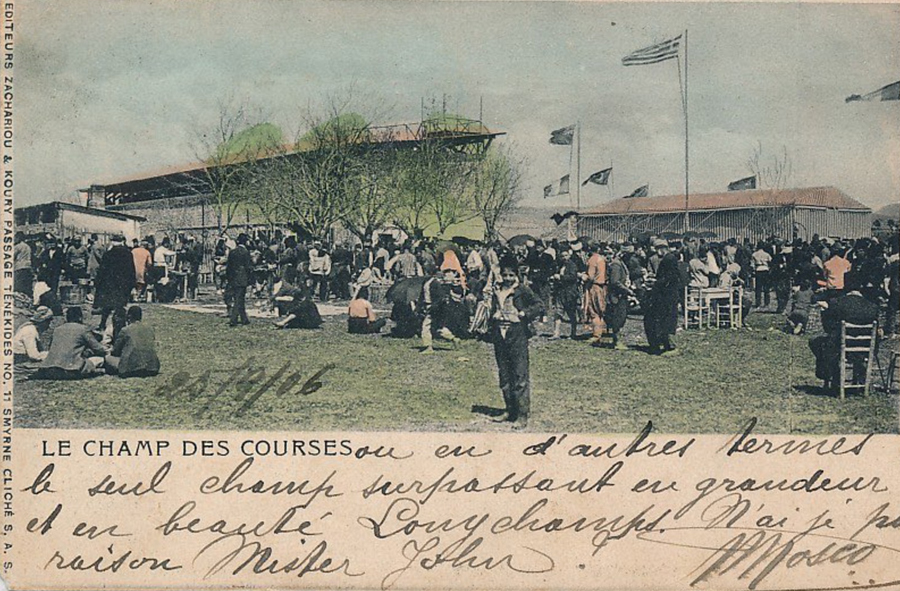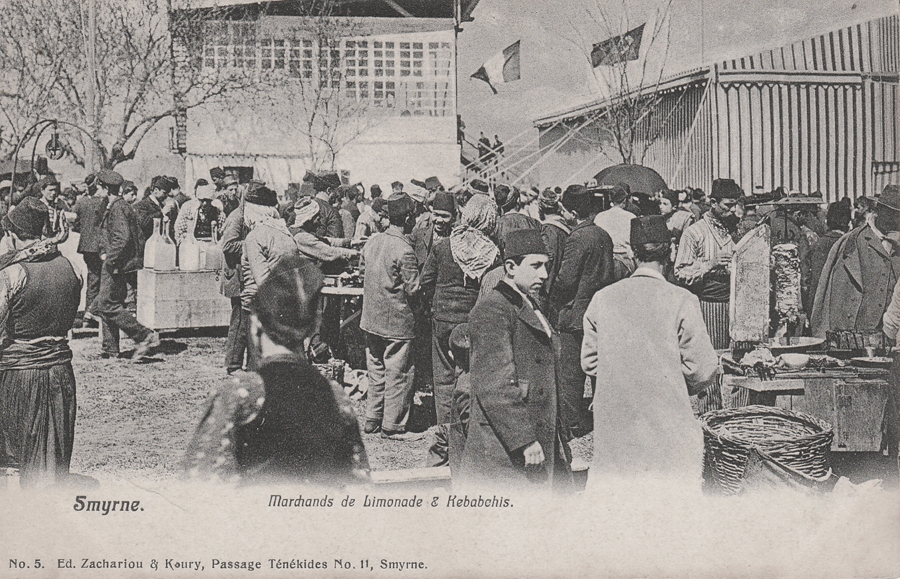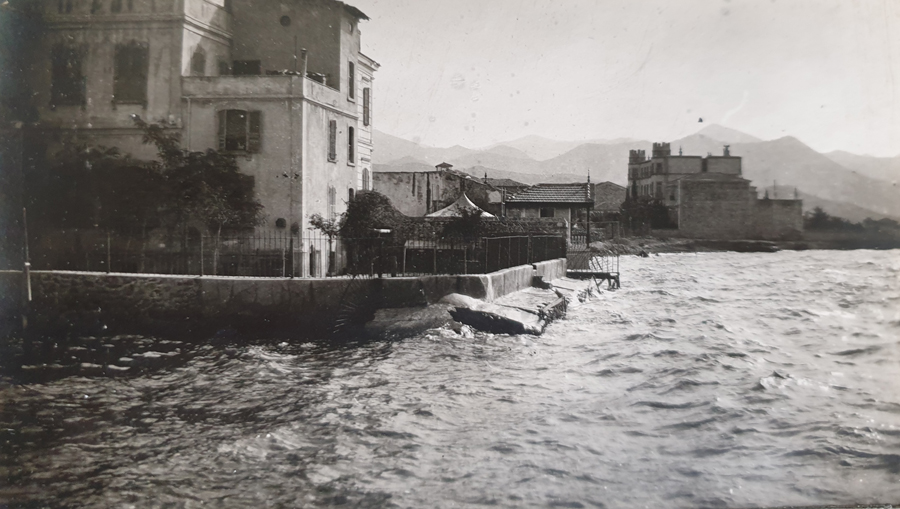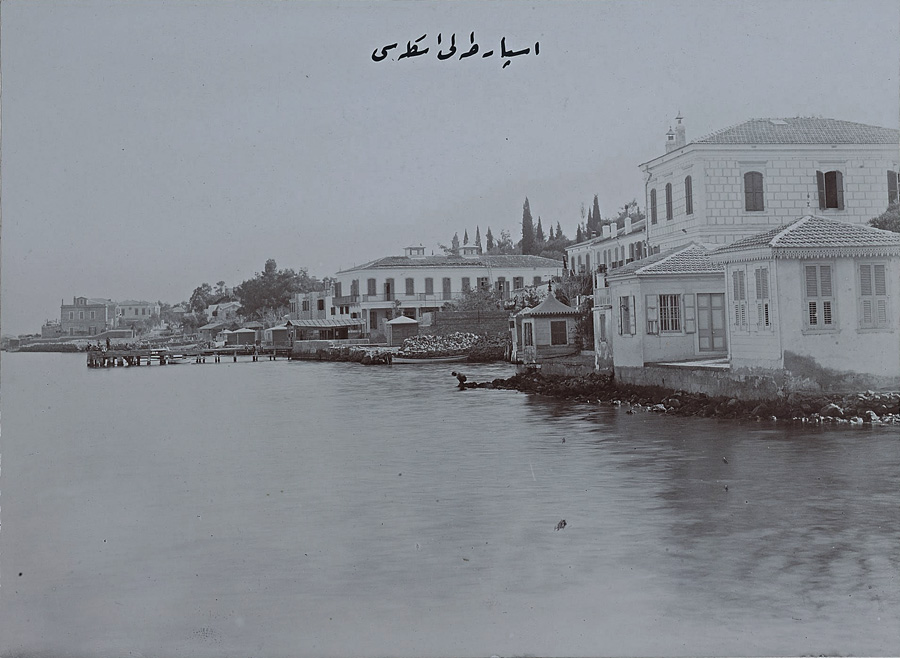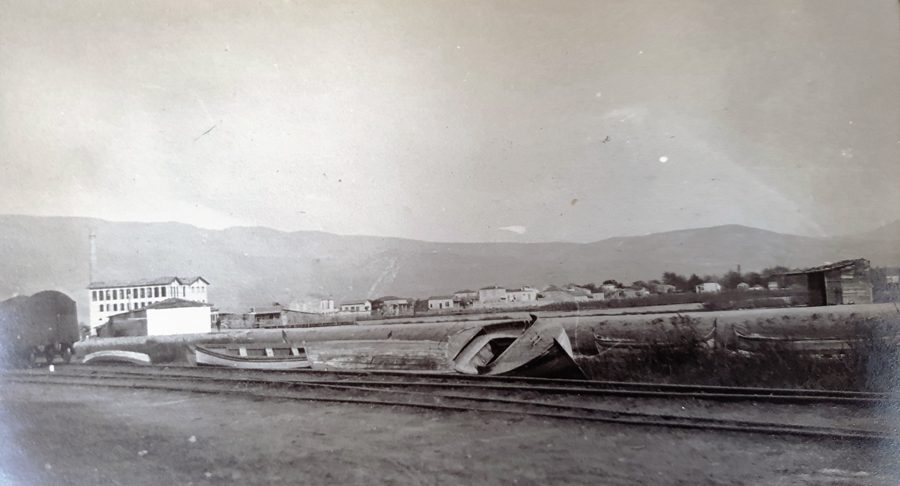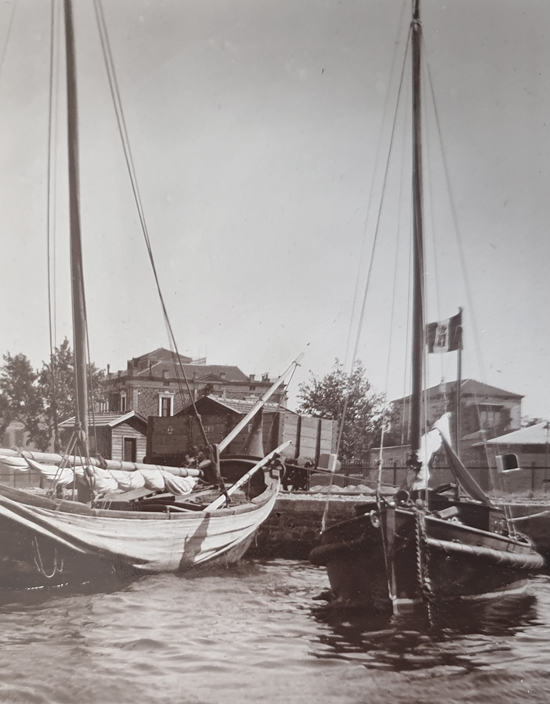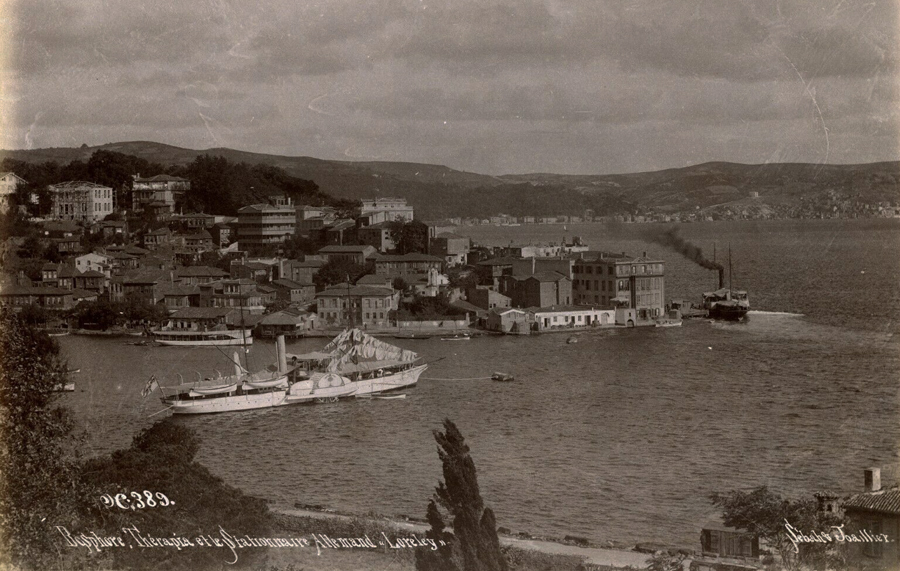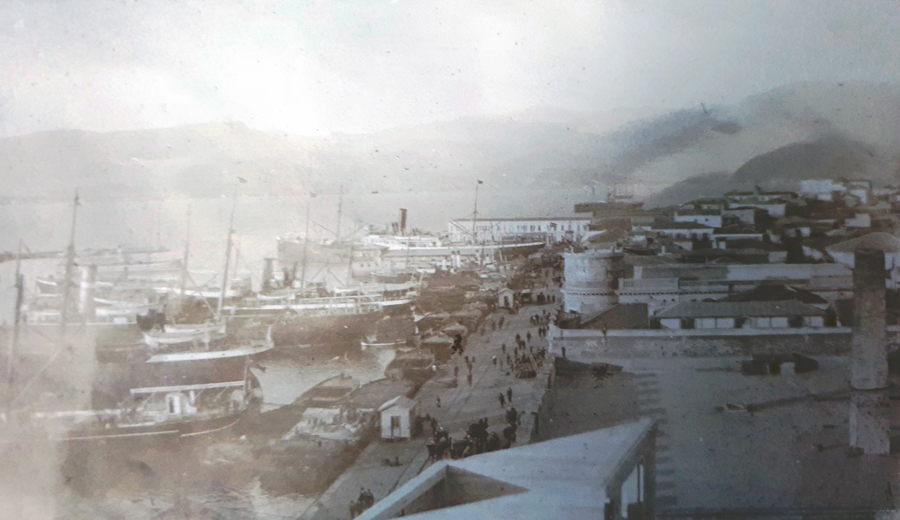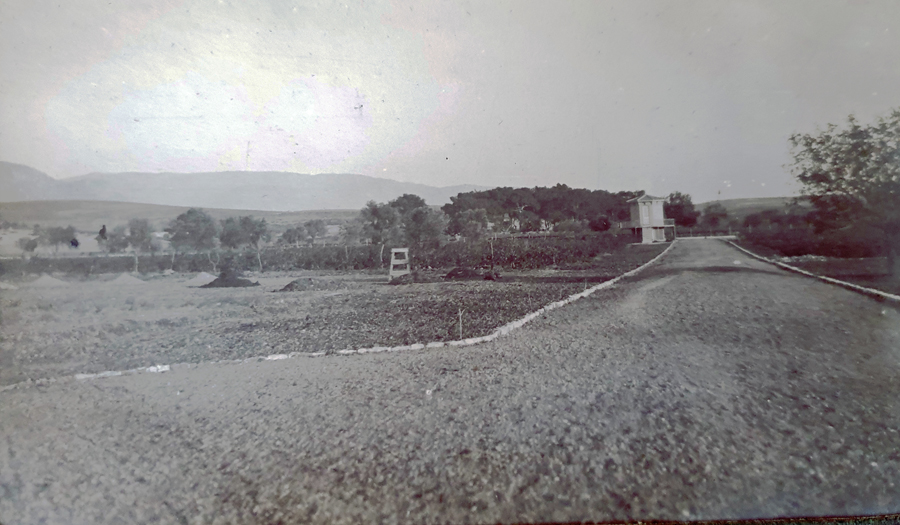Range of images taken by Edouard Spartali (1879-1956) son of Takvor Spartali of Smyrna in the early 20th century, pre-1922 and kindly provided by descendant (grandson of Edouard) Alexandre Vladesco - arranged in a thematic order.
Family groups

Caption: ‘Chriflik’ - Çiftlik in Turkish, or farm.
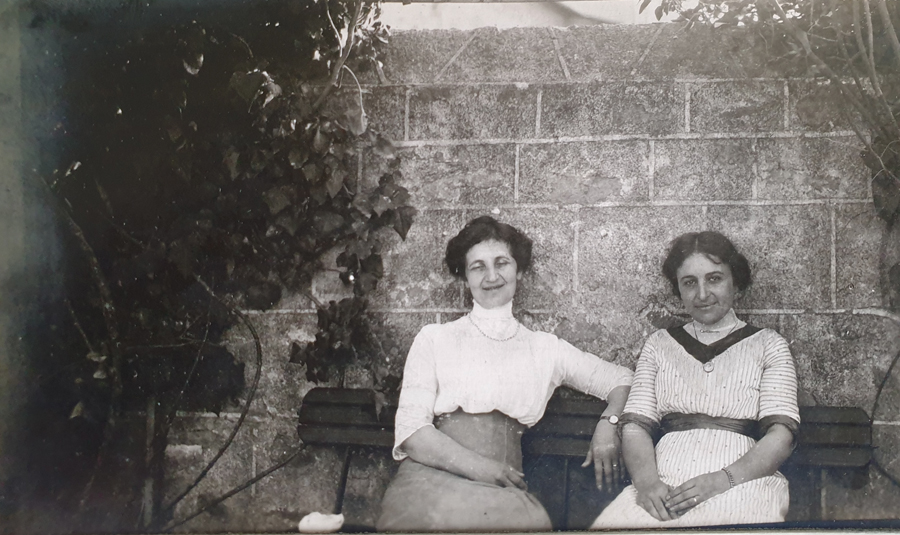
Caption: ‘Guezdepe - mme D et V’ - Göztepe is a neighbourhood south of central central Izmir, along the coast.
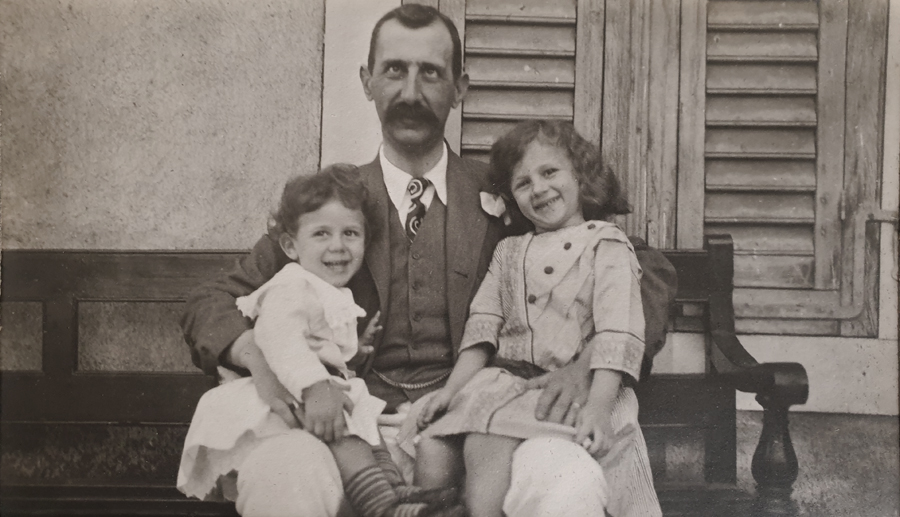
Caption: ‘Landlord of Lidja’ - Lidja is the coastal resort near Izmir today known as Ilıca near Çeşme, traditionally and today favoured by Levantines for their summer breaks. However this entire series seems to use the same name for the hot springs resort much closer to Smyrna. The ‘Landlord’ referred here could be Alphonse Mille who was the manager of this resort for many years as indicated in some postcards of the time.
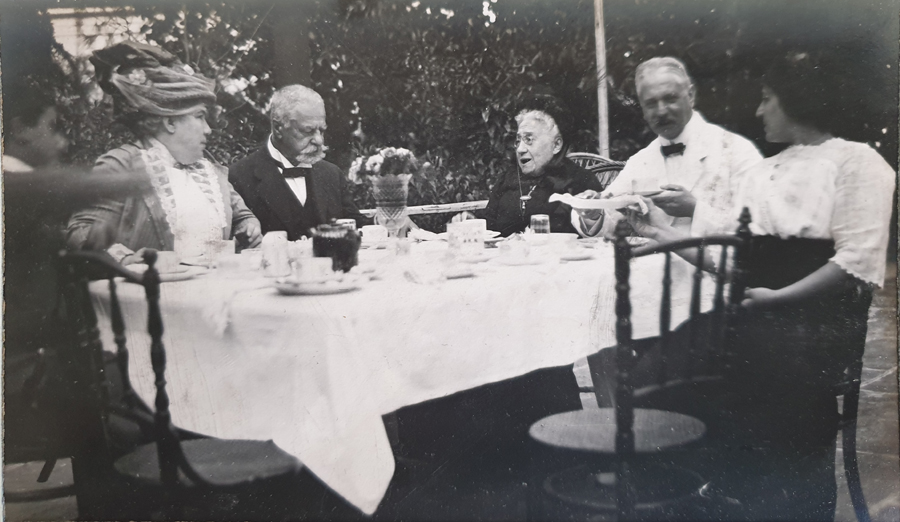
Caption: ‘Lidja - tea at Mille’ - Mille were one of the prominent French Levantine families who married into many other Levantine lines in Smyrna and resided in the city till at least the early 1940s.
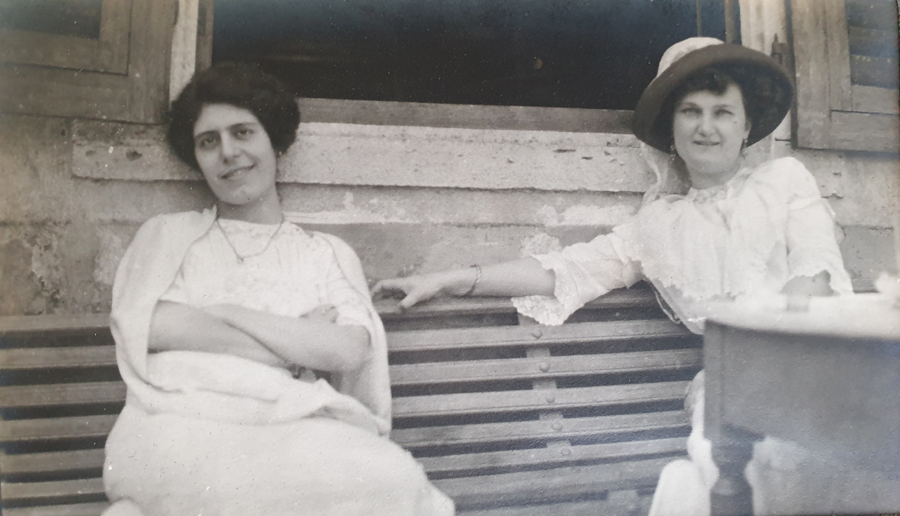
Caption: ‘Lidja - bathers at rest’.
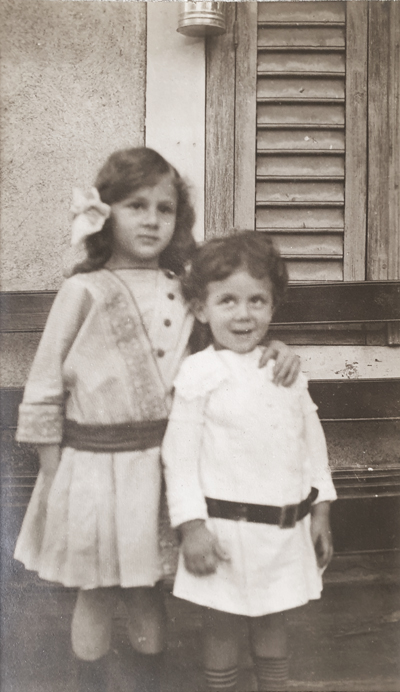
Caption: ‘Lidja - children’.
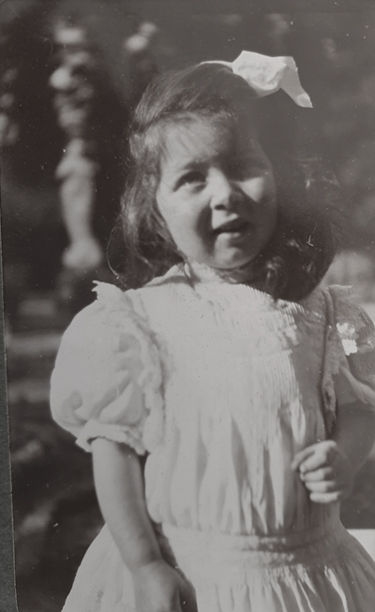
Caption: ‘Bice 3,5 years old (Beatrice Spartali)’ - same caption for image below. This name was carried by 2 generations, wife of Albert Aliotti, daughter of Takvor (born 1876) and also by the daughter of Edouard Spartali (born 1908). This photo belongs to the latter so it dates these photos to around 1911.

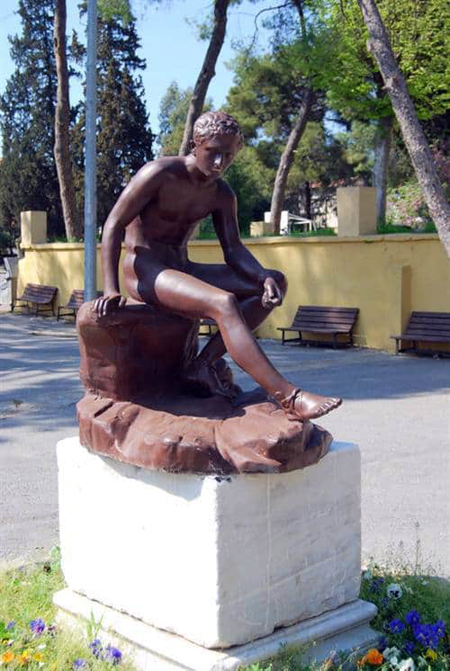
The same statue before being moved and the spot today.
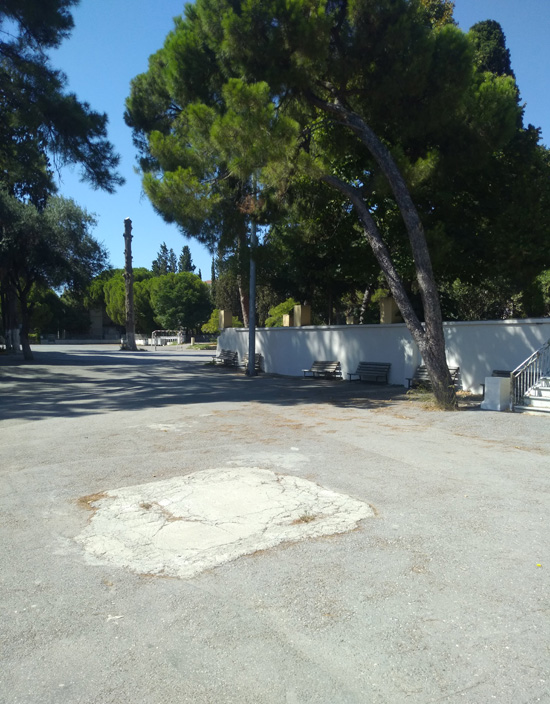
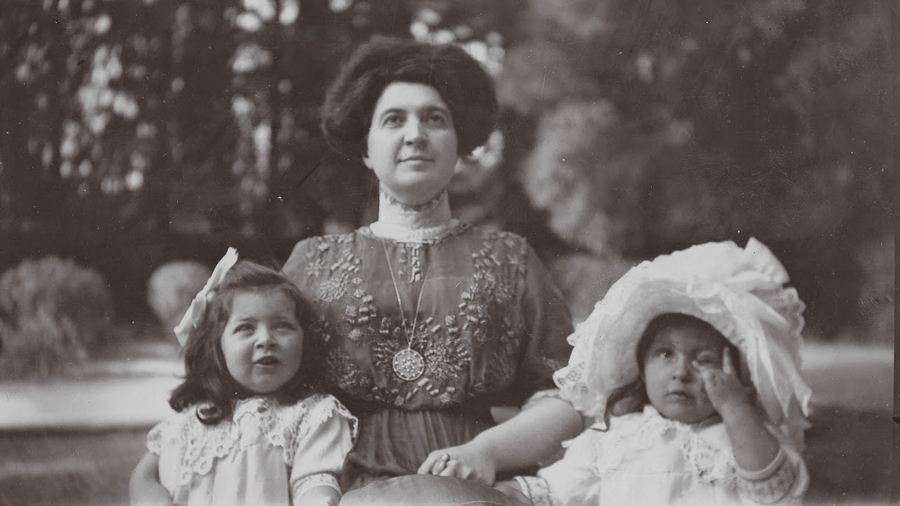
Caption: ‘Mme A. A. Boudja (Baronne Beatrice Aliotti with her nieces Beatrice Spartali & Ida Spartali)’.
Agamemnon baths
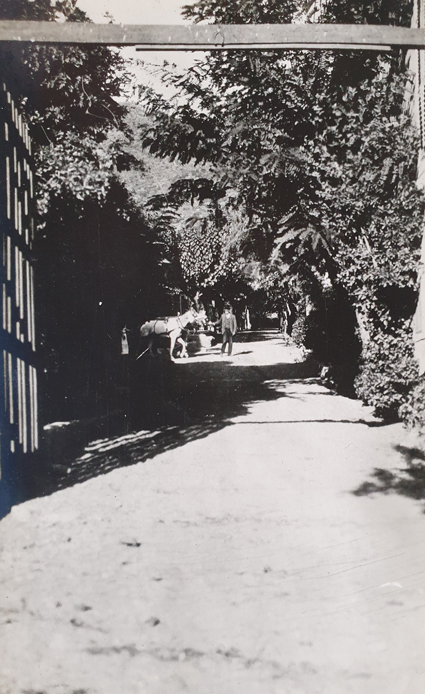
Caption: ‘Lidja - entrance to the baths’ - in reality these hot sulphurous springs are in Balçova on the road to Çeşme and is at a distance of 8 km (5 mi) to the west from the traditional center of Izmir (Konak), which it borders in terms of district on the east. The following images appear all from this location dating and used since antiquity - postcard views.
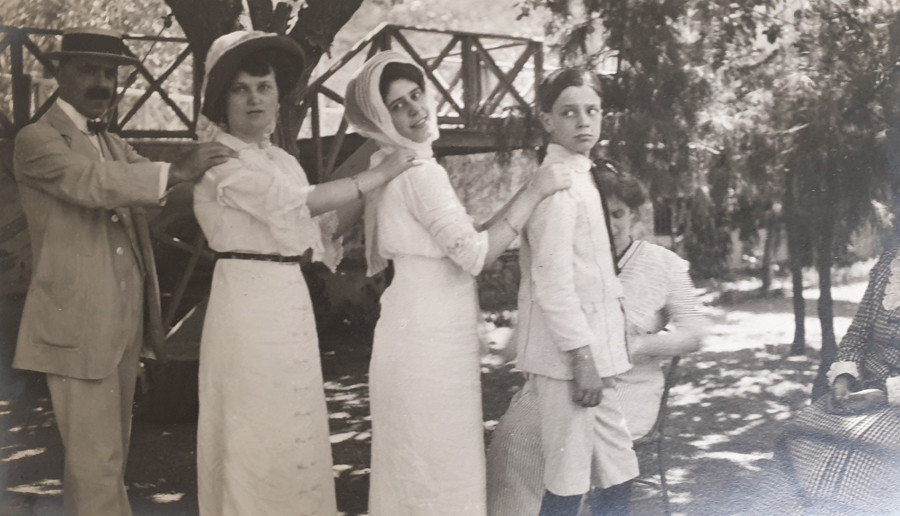
Caption: ‘Lidja - group of bathers’.
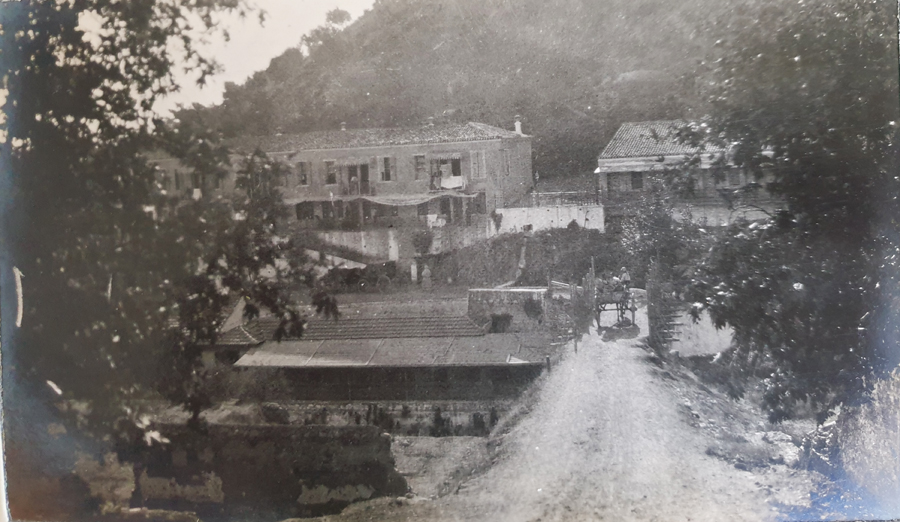
Caption: ‘Lidja Agamemnon’.
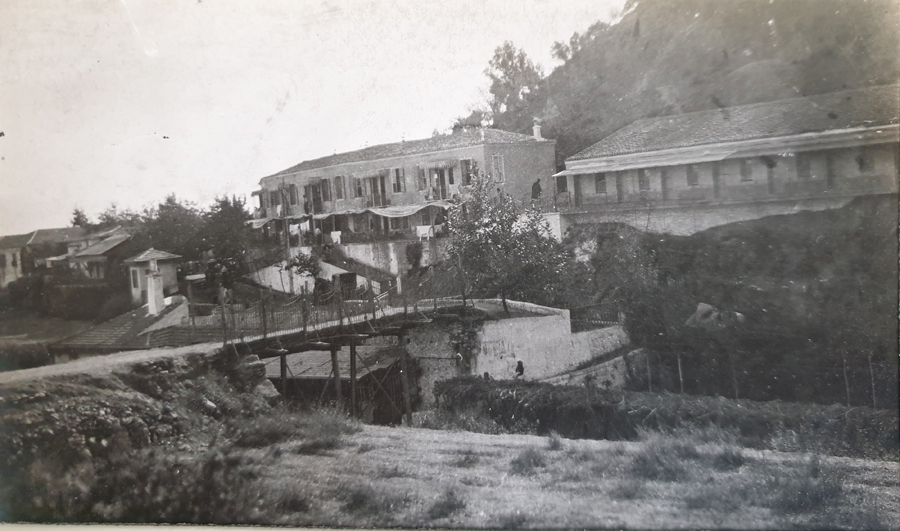
Caption: ‘Lidja Agamemnon bath’.
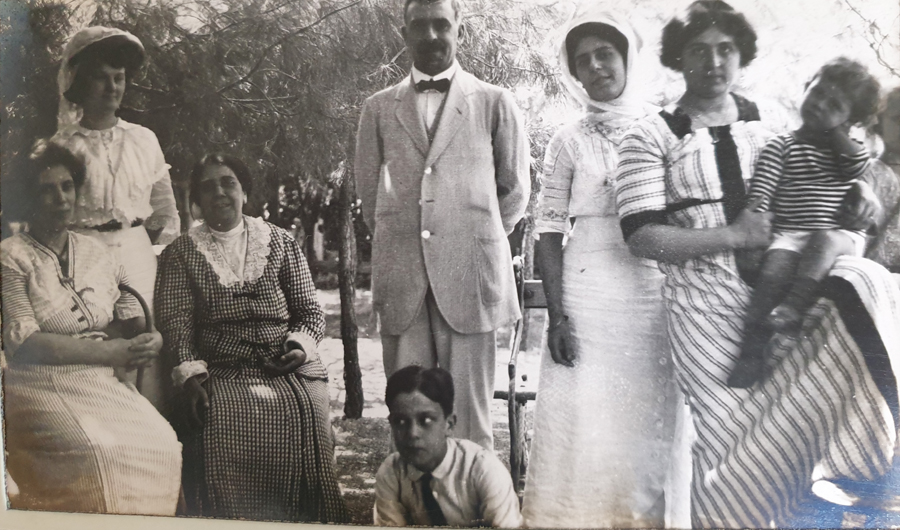
Caption: ‘Lidja - group’.
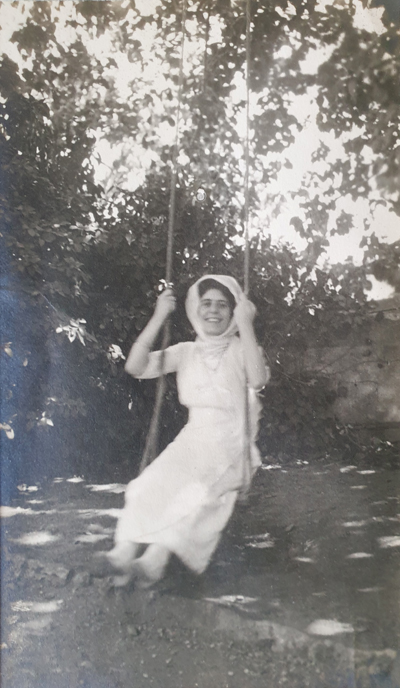
Caption: ‘Lidja - mlle Ralou’.

Caption: ‘Lidja - Mulhausen family’ - probably the Moellhausen family of Smyrna.
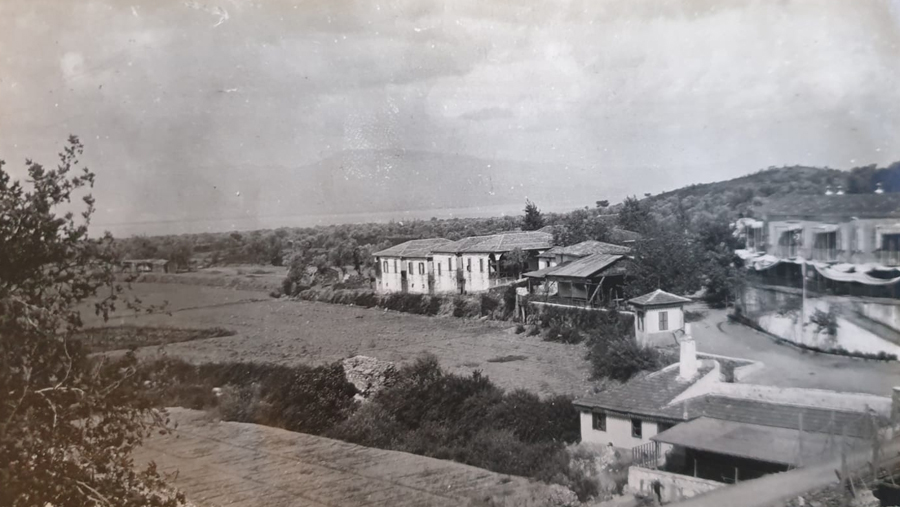
Caption: ‘Lidja of Smyrne’.
Smyrna neighbourhoods
Caption: ‘Smyrne Gueztepe’ - at one time Göztepe was one of the most exclusive neighbourhoods of Smyrna, today hardly any of these grand buildings remain. The building in the distance is the former Sivrihisaryan mansion still standing today as a local government building. Below an image from a different source (Sultan Abdülhamit archive) viewing from the opposite side the same shoreline with the caption ‘Ispartalı iskelesi’ [Spartali pier]. It seems probable that the long building in the middle of the shot (and probably the row of 4 humbler dwellings beyond) all belonged to the Spartali family possibly serving as their summer residence?
Caption: ‘Halkabounar’ - Halkapınar with the stocky former flour-mill building in the background - alternative view.
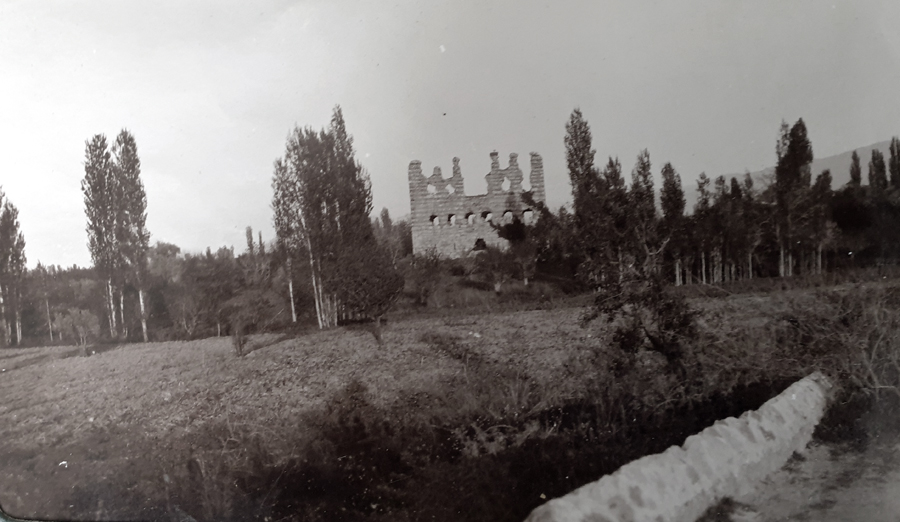
Caption: ‘Possibly Nymphio, Palace of Andronique’. Laskaris Palace in today’s Kemalpaşa.

Caption: ‘The cloth factory under construction’. O.C.M. bought The Ottoman Cloth Ltd around 1913 (textile sheet factory) in order to recycle residual materials from the carpet industry but also to obtain important deals with the imperial army. Source :
Report: ORIENTAL CARPET MANUFACTURERS LTD 1
Siège social: À Londres, 9, Warwick Square, Newgate Street.
Succursale à Paris: 5, rue Grétry.
Assemblée générale ordinaire du 25 janvier 1912
RAPPORT DU CONSEIL D’ADMINISTRATION
(according to the document, the factory was already active during the time when the meeting took place).
Boudja house
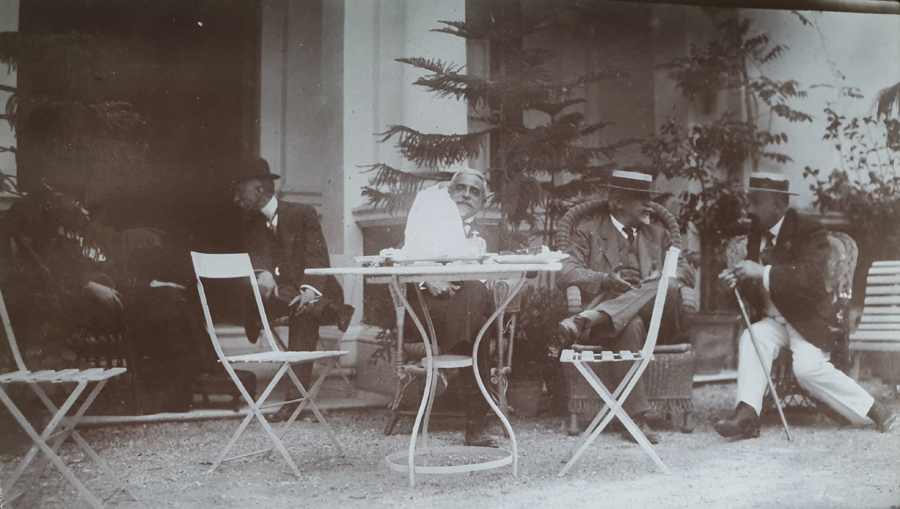
Caption: ‘Spartali house, Boudja - guest’.
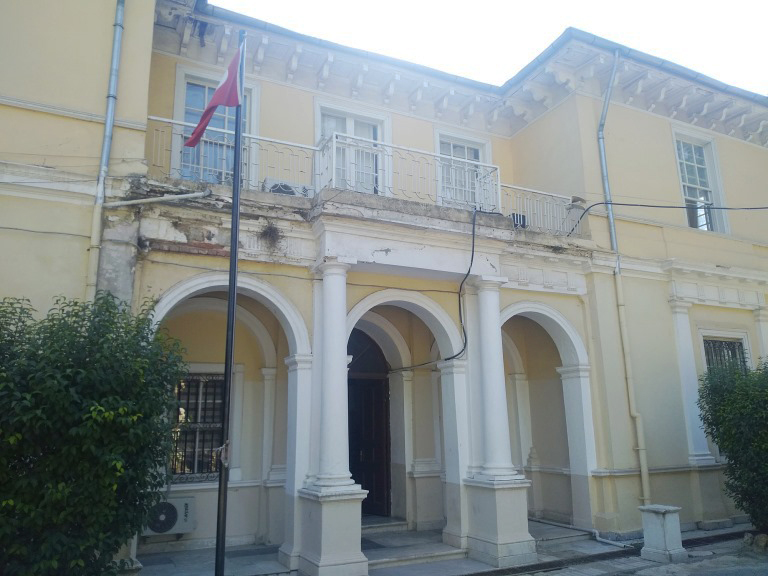
Clearly taken here in front of the former Baltazzi house, whose archicture perfectly matches as seen above.
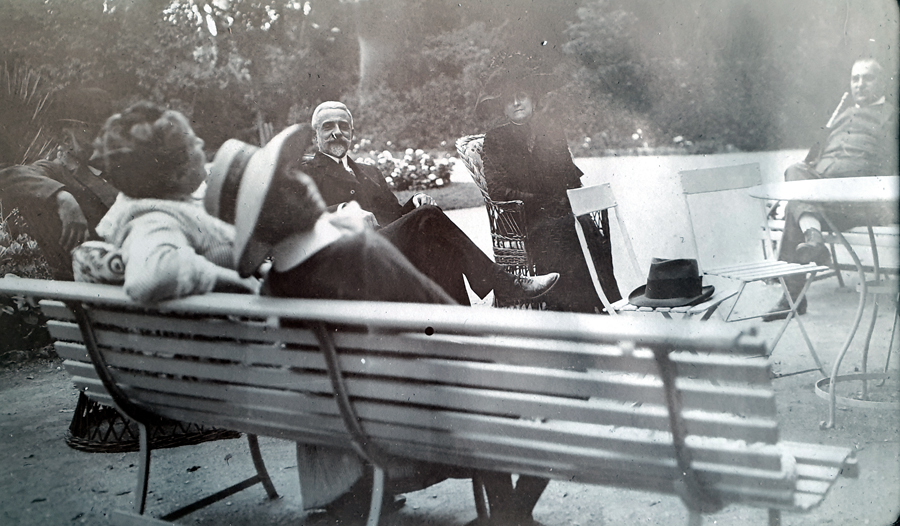
Caption: ‘Spartali house - a group’.
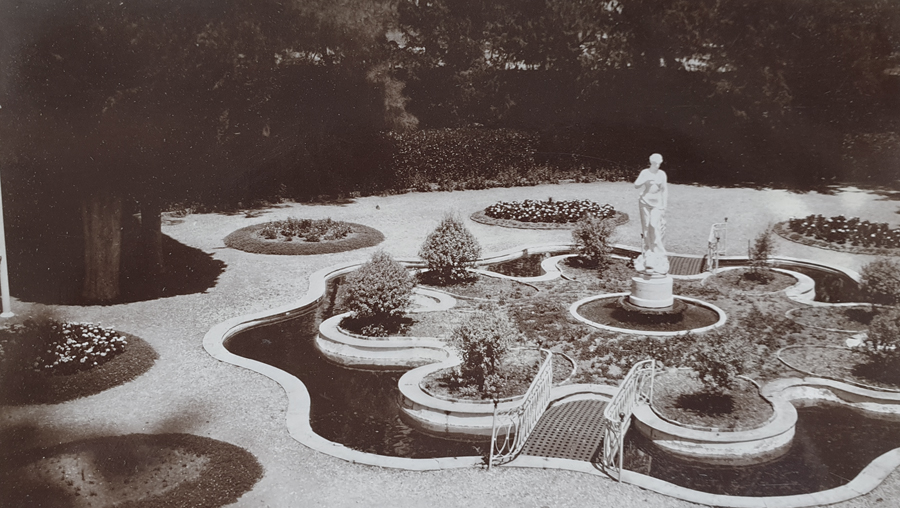
Caption: ‘Spartali house, Boudja’. The ornamental pond and statue appears the same of what was at the former Baltazzi mansion of Buca, so clearly the Spartali family bought this property from that family who owned it from at least 1863 when the Sultan paid a visit to this important Levantine banking family of the time.
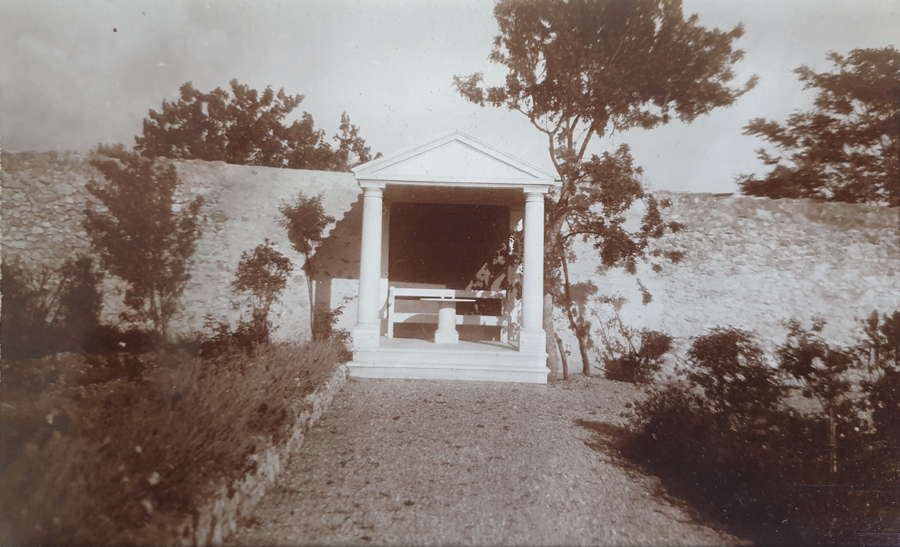
Caption: ‘Spartali house, Boudja’.
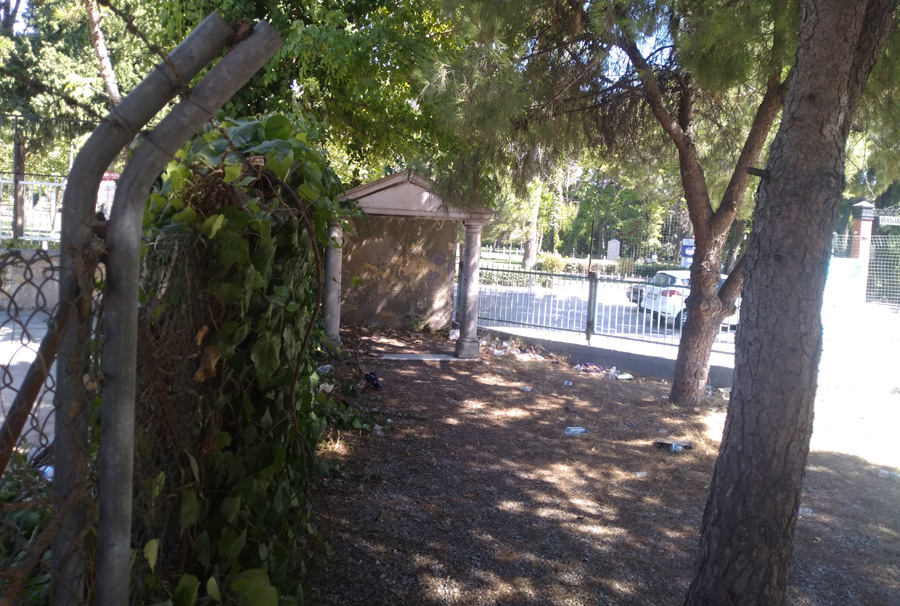
The rather derelict same mini-temple sun-shade today in the former ‘Baltazzi garden’, proving they are the same house.
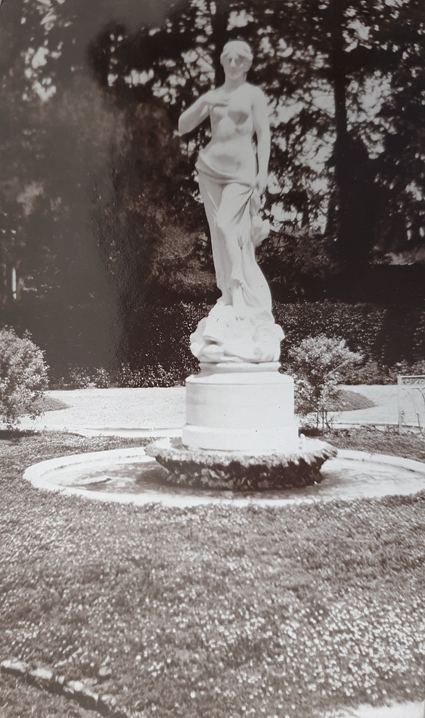
Caption: ‘Spartali house - Venus statue’ - below the same statue today.

This statue is a replica, the original of this and others in the garden removed for safety to the museum of Dokuz Eylul University.
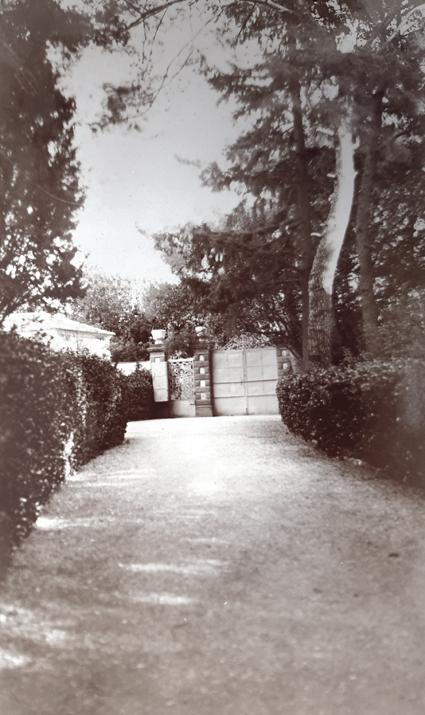
Caption: ‘Spartali house - entrance’ - below the same entrance today.
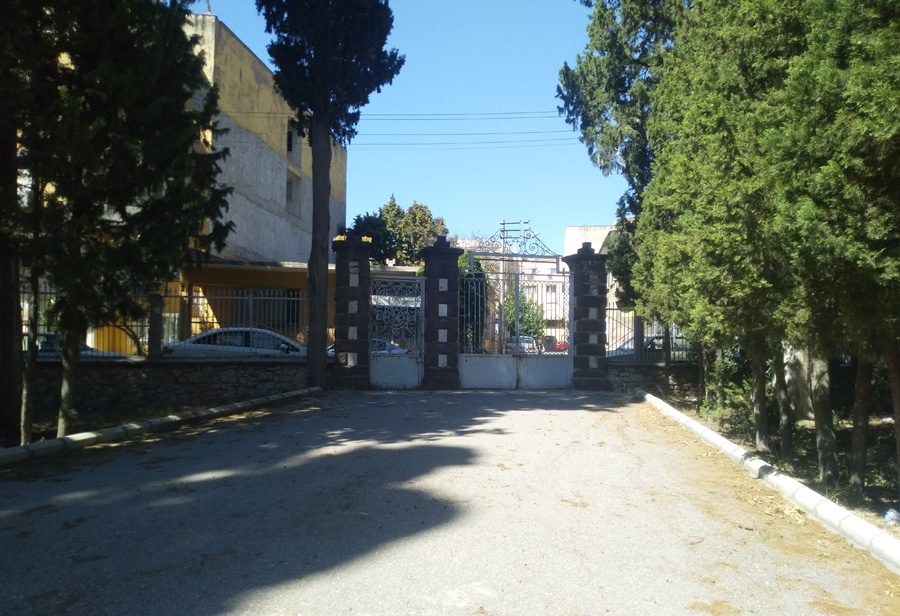
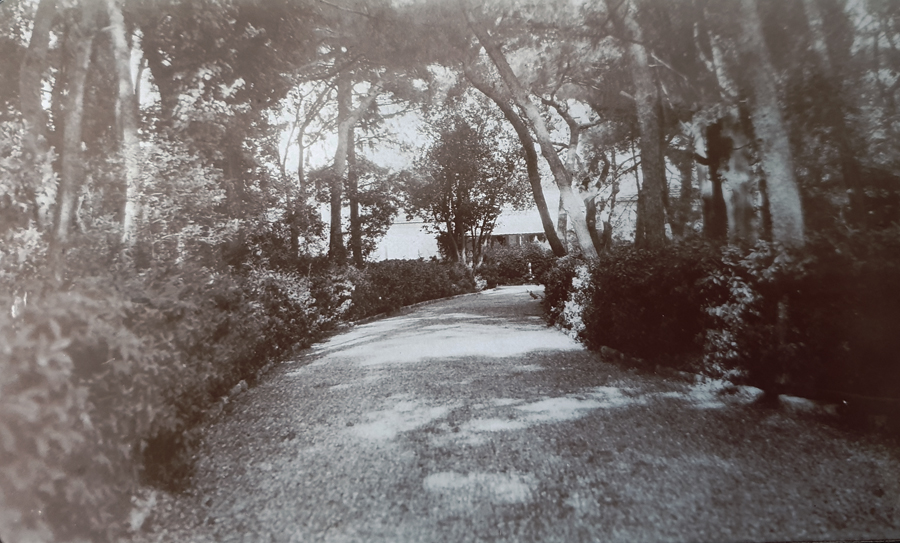
Caption: ‘Spartali house - the park alley’ - below view today.
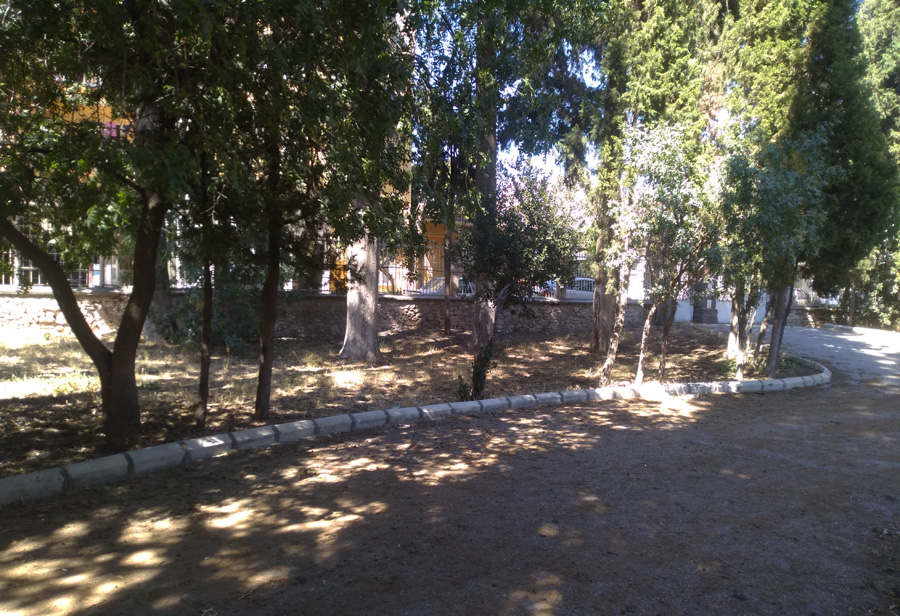
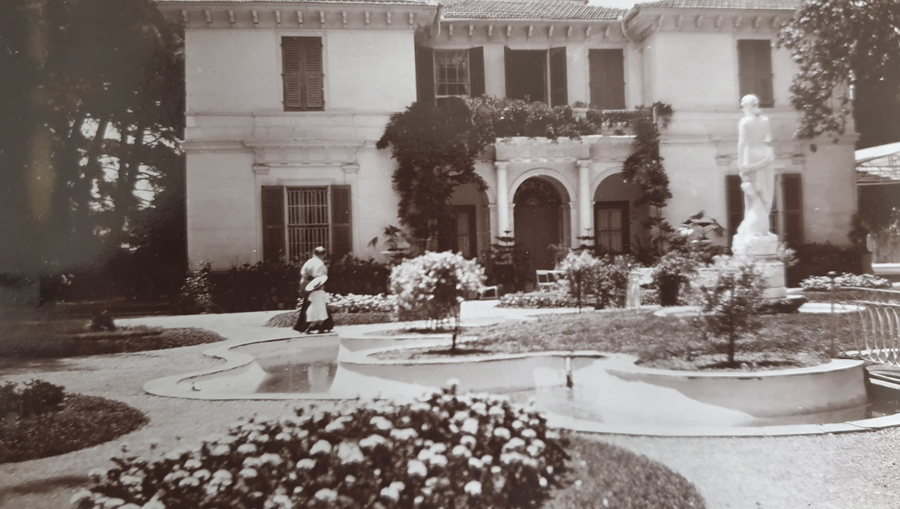
Caption: ‘Spartali house - the facade’.
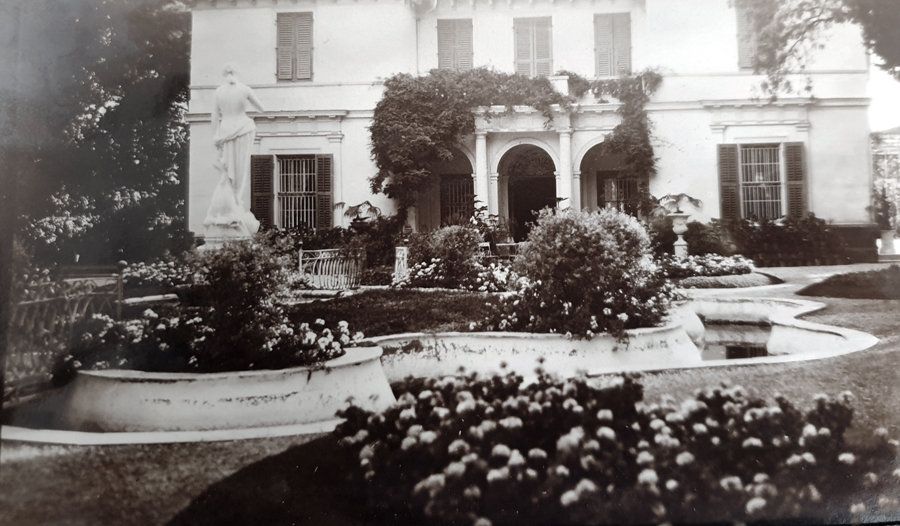
Caption: ‘Spartali house - the facade’ - below view today.
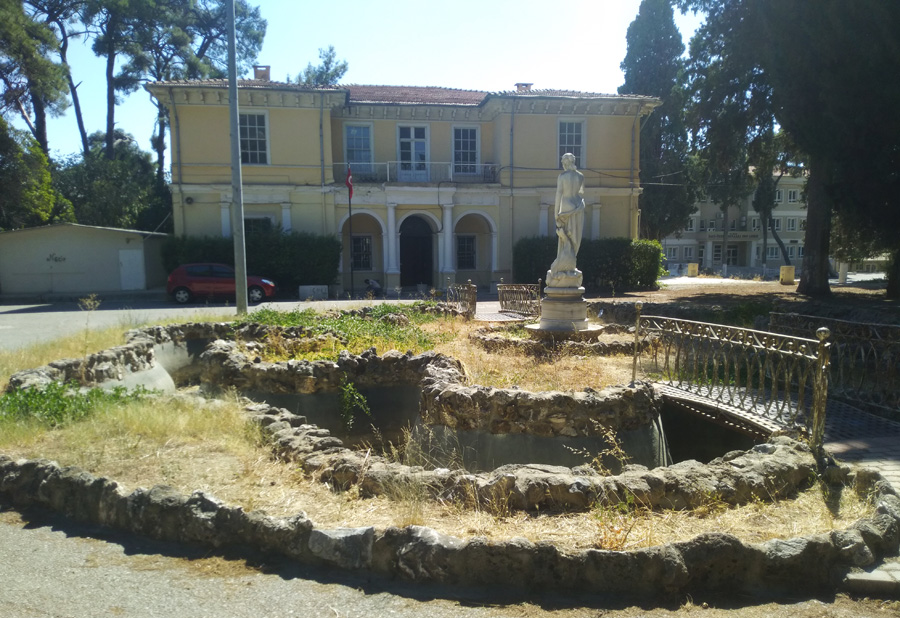
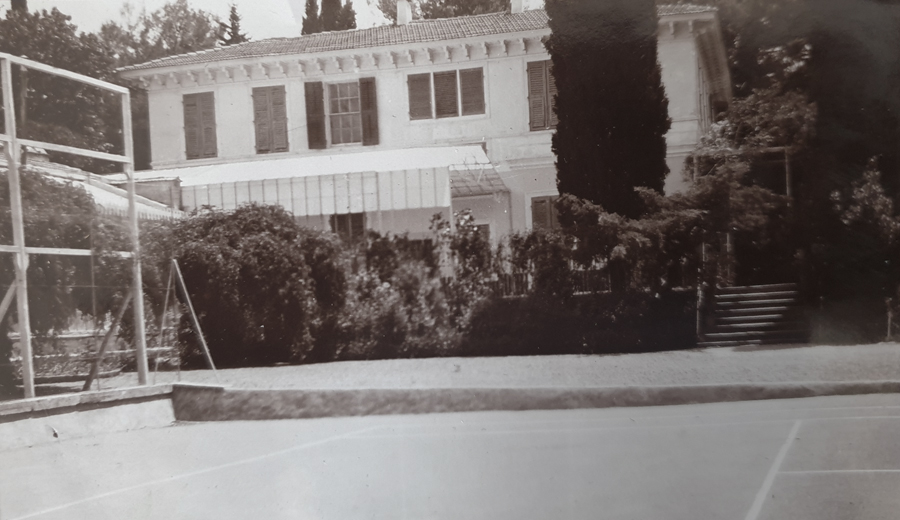
Caption: ‘Spartali house - Boudja with tennis court’ - below view today.
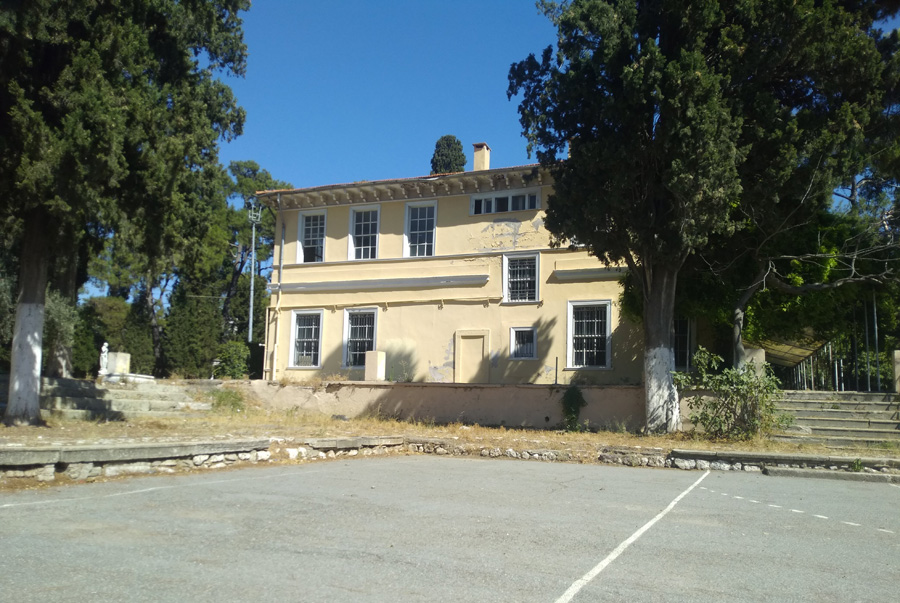
The same western facade of this building today and no tennis courts. The school is now used as a ‘Kız İmam Hatip Okulu’ (Religious School for Girls).
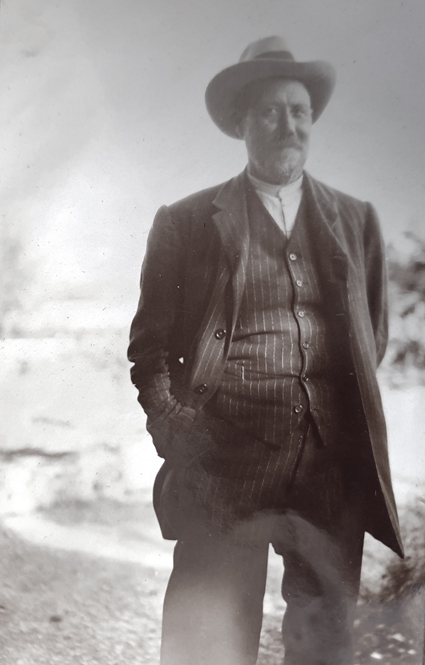
Caption: ‘Spartali house - chief gardener’.
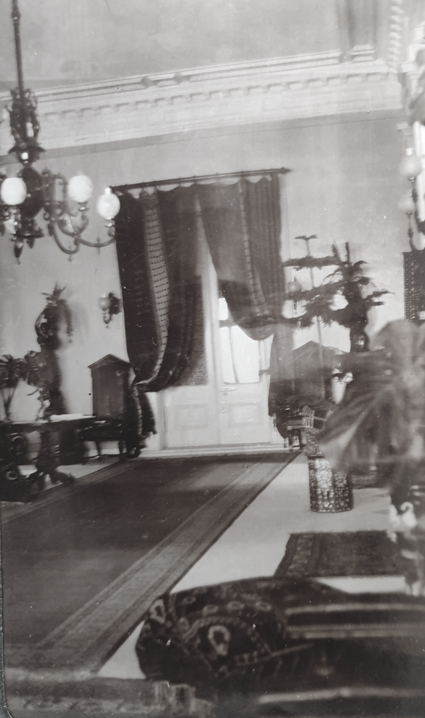
Caption: ‘Spartali house - the entrance hall’.
Boudja life

Caption: ‘Auto Clément-Bayard, Boudja’. This car belonged to Edouard Spartali but the person in front is not identified. The vehicle was produced in 1910 by a French company that was active 1903-22.
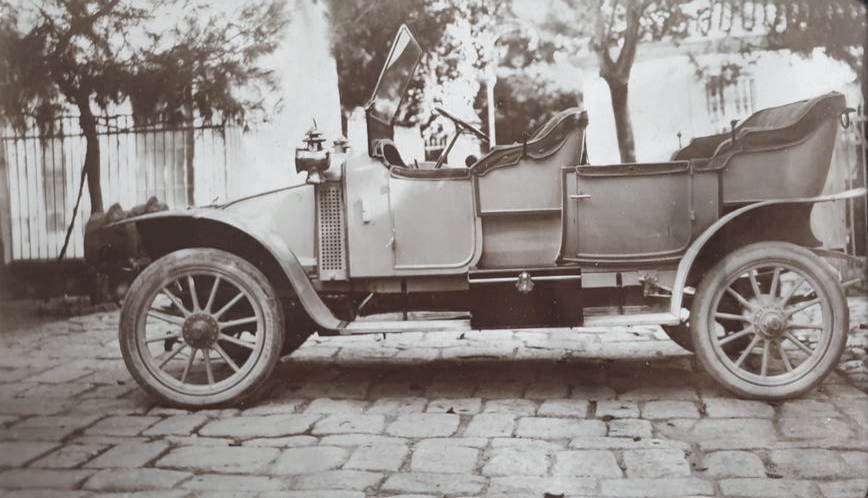
Caption: ‘Auto Clément-Bayard, Boudja, 12ch’.
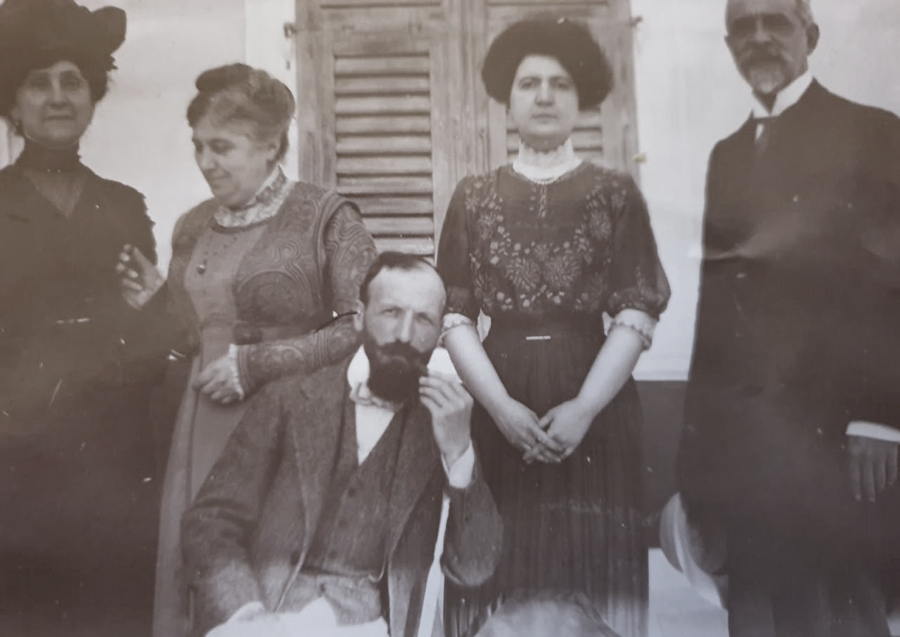
Caption: ‘Group of friends’.
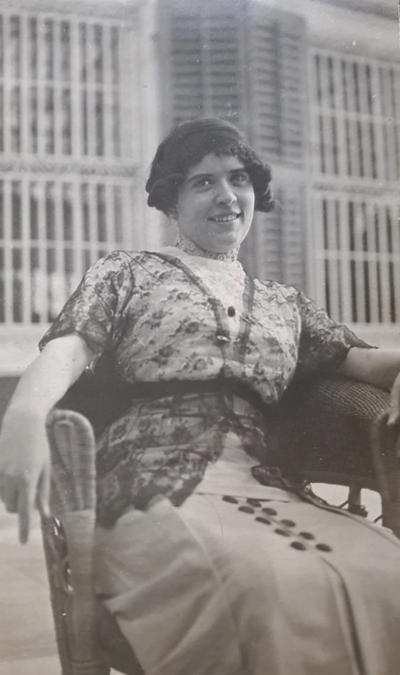
Caption: ‘Mme Lilianne L. Boudja’. The initial here could refer to one of the established Boudja family members, such as Lee (British), Lees (Dutch), Lipovatz (Bulgarian), Lorando (Greek - Nikos Lorandos was a doctor in Buca and of the International College of Paradise) or other?
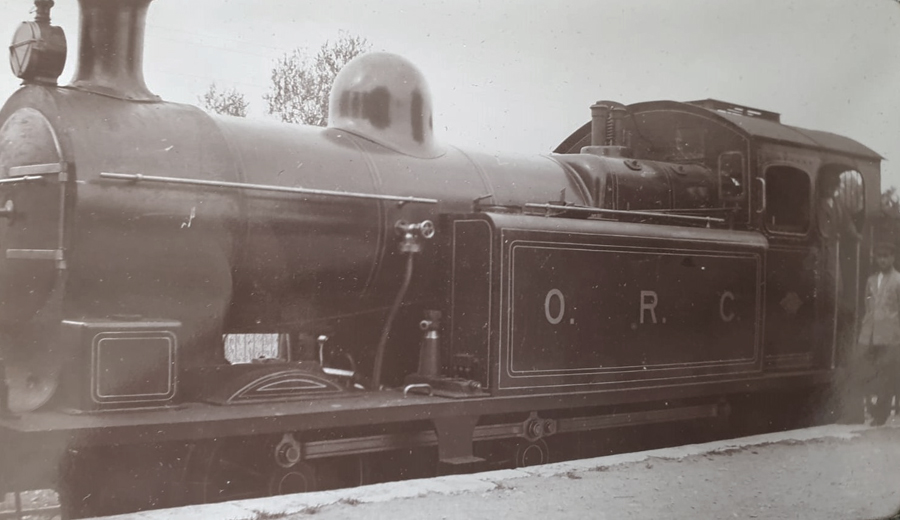
Caption: ‘Locomotive 1911, Boudja’. This station operated between 1872 and 2006. This is a 0-6-2T, tank engine, one of three built by Robert Stephenson & Co. Ltd. of England and supplied to the Ottoman Railway Company in 1911. The photo shows the locomotive in full ORC livery of green and black with white with red lining - information courtesy of Alan Prior.
Yachting

Caption: ‘Abafna’ - This and the next 3 photographs taken at the Vasiliadis shipyard in Piraeus, Greece. The caption probably refers to the Steam yacht “Abafna” of Mr Albert Aliotti, 160 tons - info: (ref. B.G.)

Caption: ‘Bailout’.
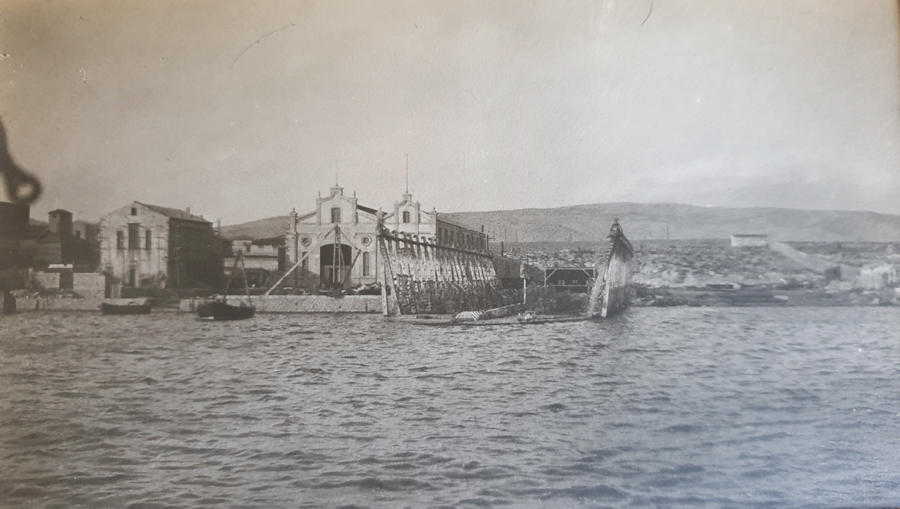
Caption: ‘Vassiliades’.
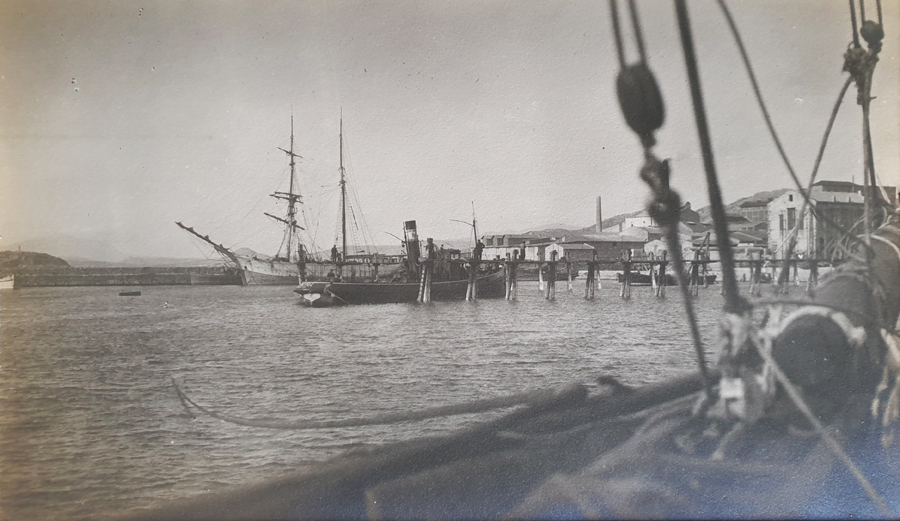
Caption: ‘Steamboat’.

Caption: ‘The Bice’. This name is the affectionate diminutive of Beatrice. This name is the affectionate diminutive of Beatrice. This is the first name of my grandmother and her aunt (Takvor’s daughter). Takvor also had a 130 or 160 tons steamboat named Sophia, after his wife Sophie Ekisler.
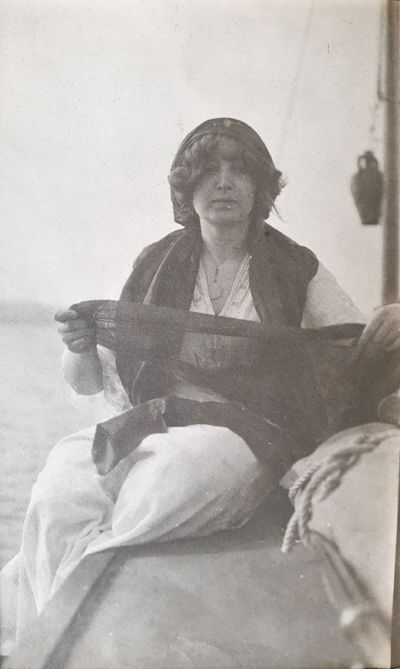
Caption: ‘On the Bice yatch’.

Caption: ‘of the crew’.
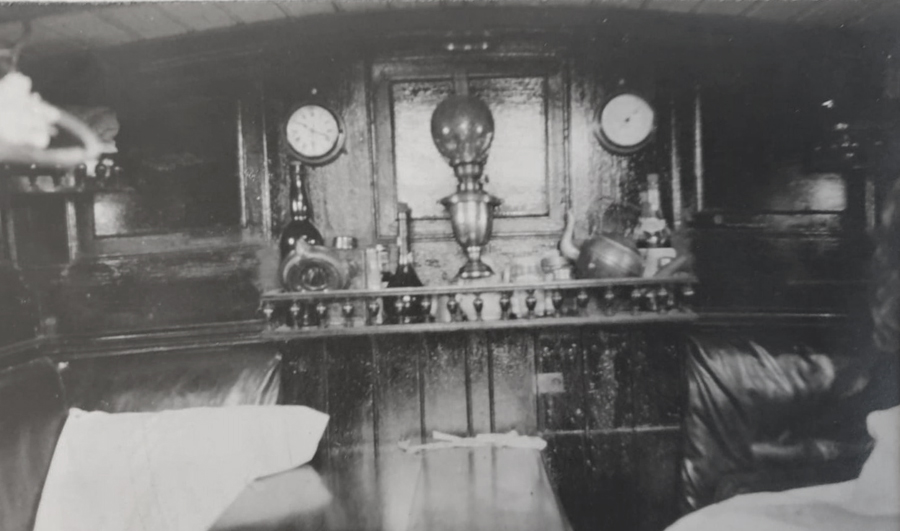
Caption: ‘Bice, the cabin’.
Caption: ‘Bice - seen from the front’. The vessel seems to have an Italian flag and is moored infront of a railway carriage, so probably by the ‘English pier’ at the northern end of Punta, Smyrna. The image below appears to show the same vessel on the other side of this pier.


Caption: ‘Sailboat race’.
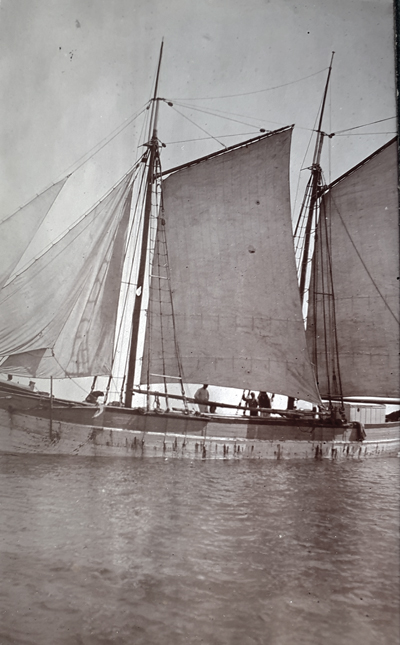
Caption: ‘Sea ship’.
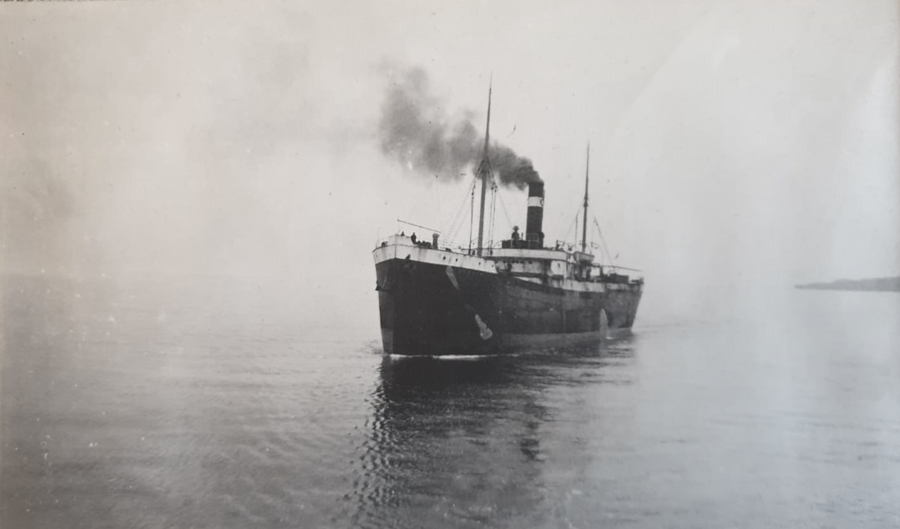
Caption: ‘Steam ship’.
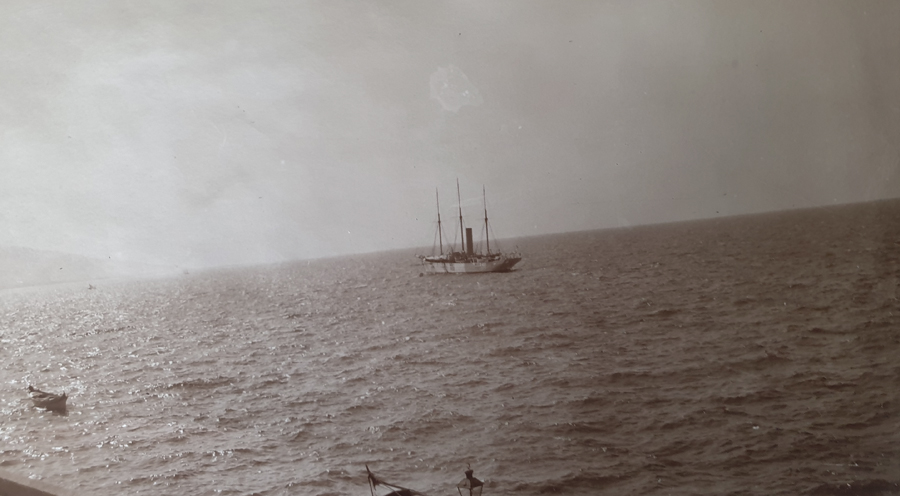
Caption: ‘The Loreley’. Below is an image from an unrelated source probably taken from an Allied warship in the bay on Sept 1922 in the early stages of the Great Fire of Smyrna, possibly showing the same yacht with its middle mast lowered?
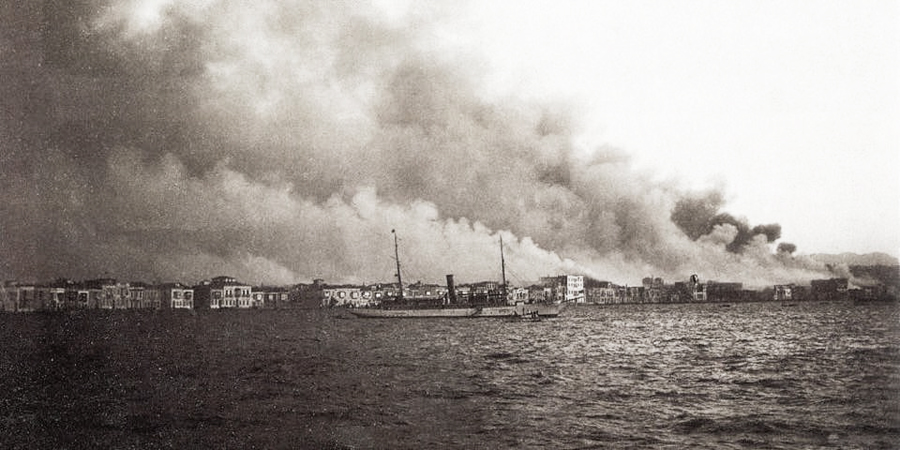
Another unrelated an earlier image of the same yacht which reveals in the postcard caption as the German Embassy stationary yacht (customary held also by the British and French also in the same bay of Therapia as an emergency exit for diplomats / pleasure trips) of the Germans and the yacht may have been brought to Smyrna with the rise of tensions with the defeat of the Greek forces and be ready to evacuate German staff and citizens from Smyrna.
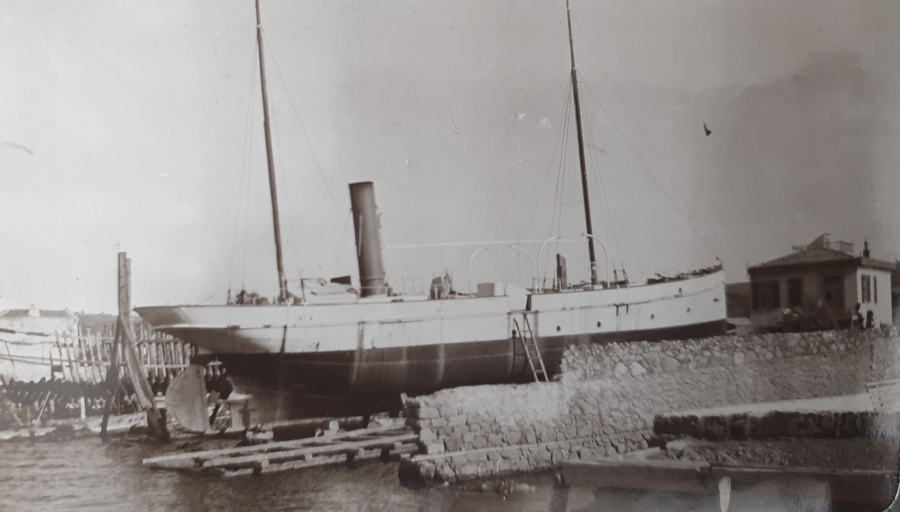
Caption: ‘Yatch - Sophia’. This was owned by Mr Ed. Spartali 140 tons - (ref. B.G.)
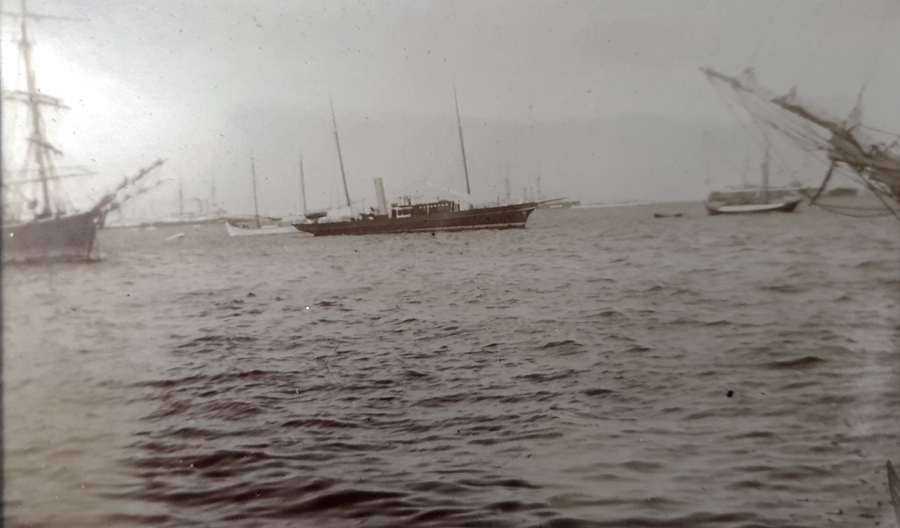
Caption: ‘Yatch Dragon - Smyrna’. This was owned by Mr T.B. Rees 140 tons - (ref. B.G.).
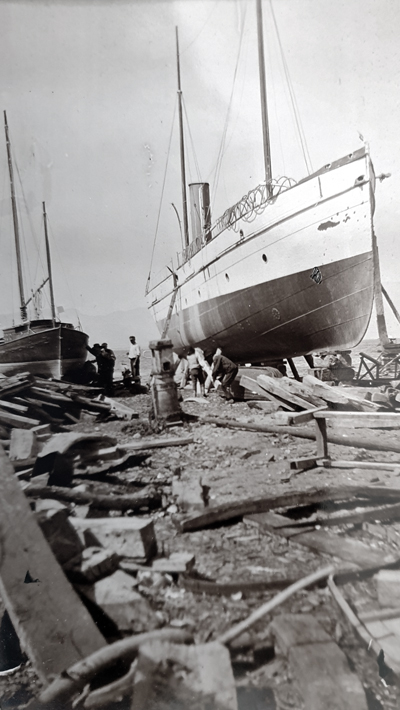
Caption: ‘The yatchs the Bice & the Sophia’.

Caption: ‘On the osmanie’.
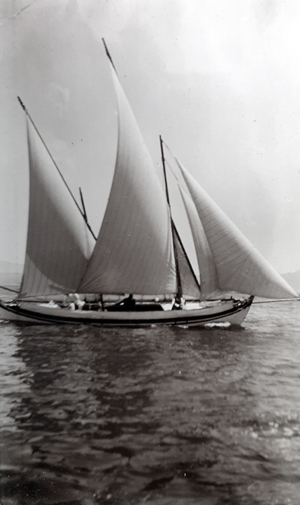
Caption: ‘Mulhausen yacht’.
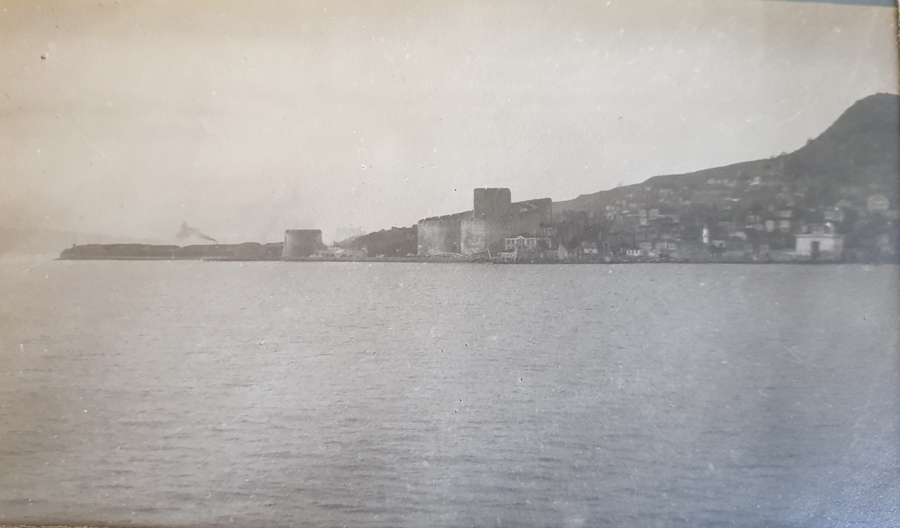
Caption: ‘Dardanelles - Kilid Bahr’. Kilid Bahr Fort was located on the Northern, European side of the Dardanelles Straits at their narrowest point.
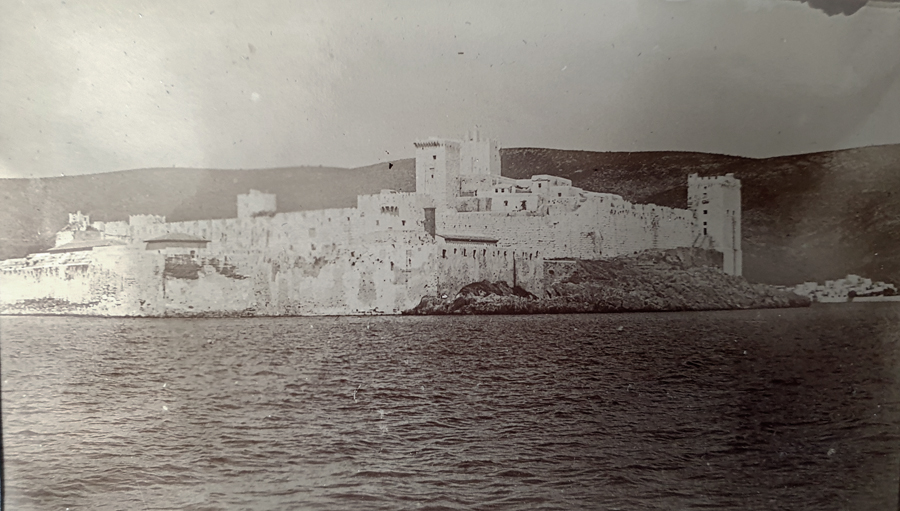
Caption: ‘Castle of Bodroum’. Bodrum Castle in southwest Turkey was built from 1402 onwards by the Knights of St John as the Castle of St. Peter and was captured in 1523 by the Ottomans.
Ethnographic

Caption: ‘Fisheries fence’.
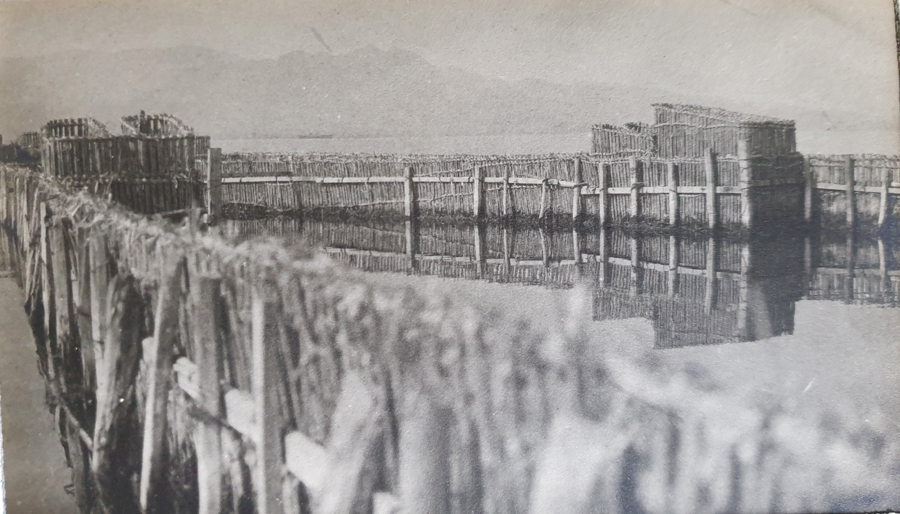
Caption: ‘Fisheries gate’.
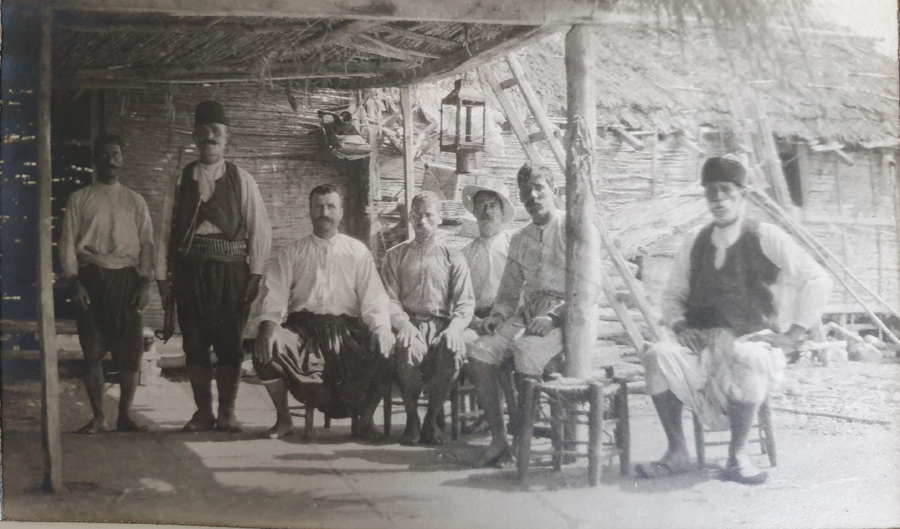
Caption: ‘Fishermen’.
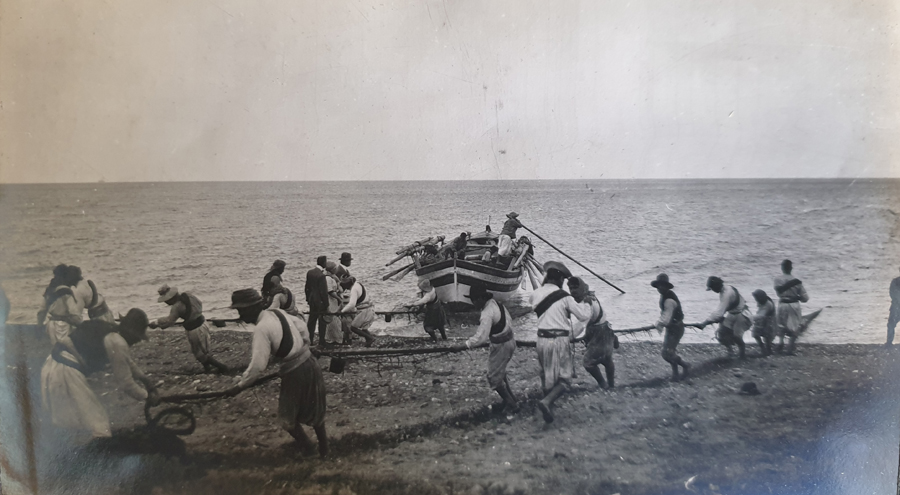
Caption: ‘Fishermen’.
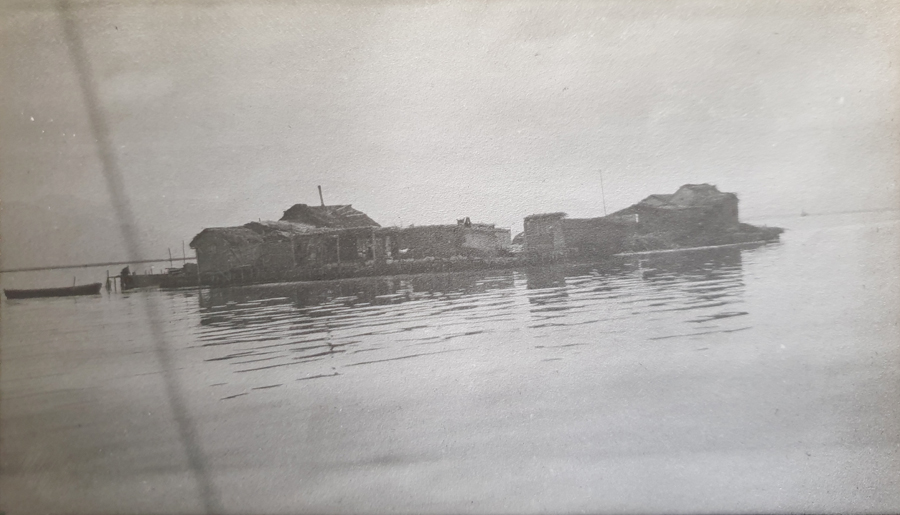
Caption: ‘Fishery of castle’.
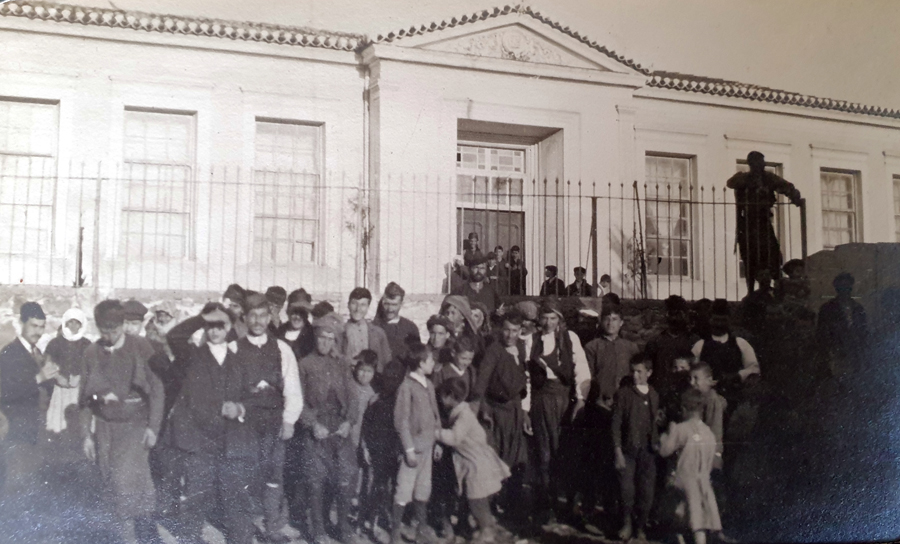
Caption: ‘The Greek school’ - location not specified.
Vourla
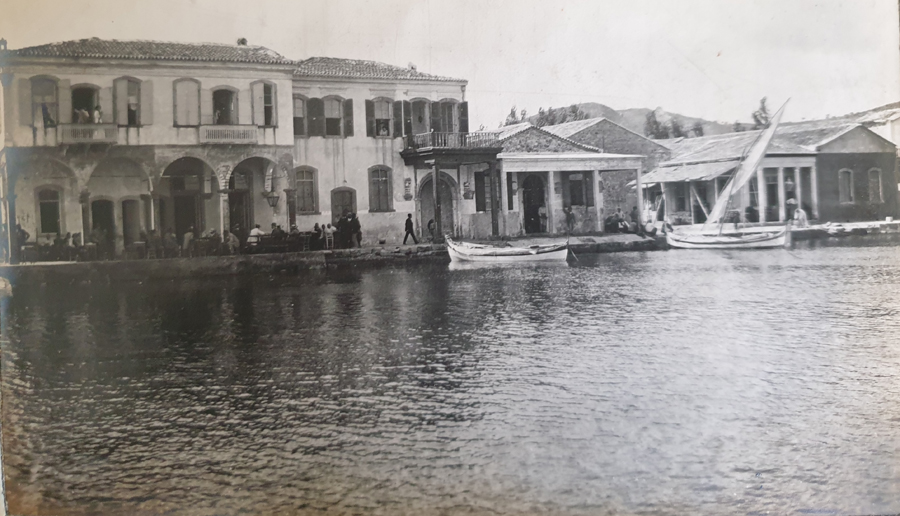
Caption: ‘Vourla - the harbour’. This former minor port south of Smyrna is now known as Urla.
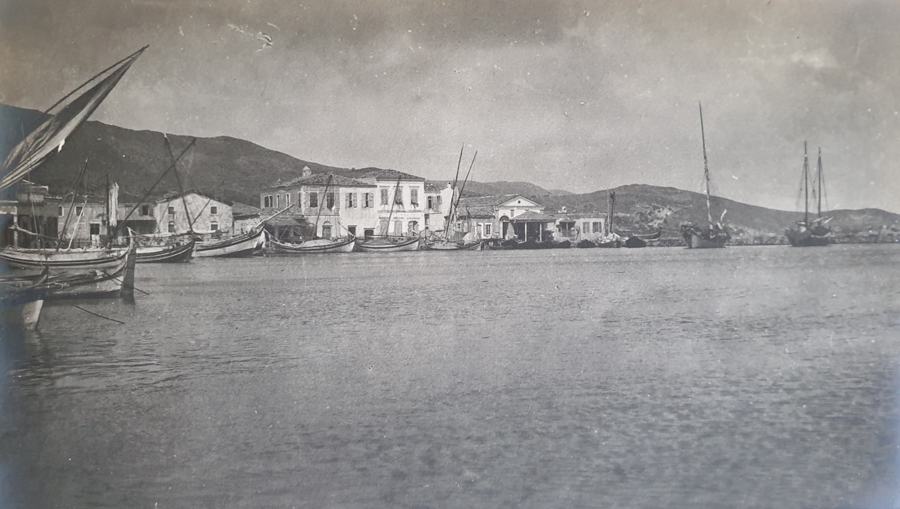
Caption: ‘Vourla - the harbour’.
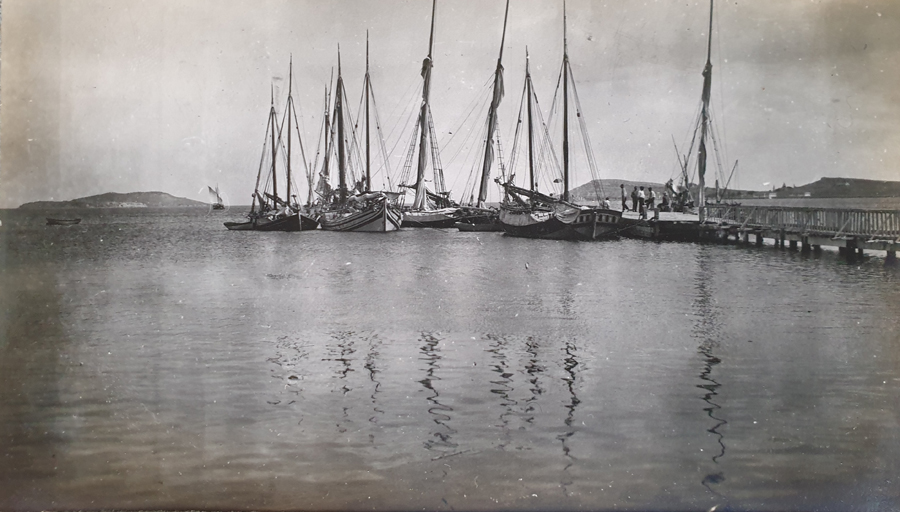
Caption: ‘Vourla’.
Smyrna Shorefront
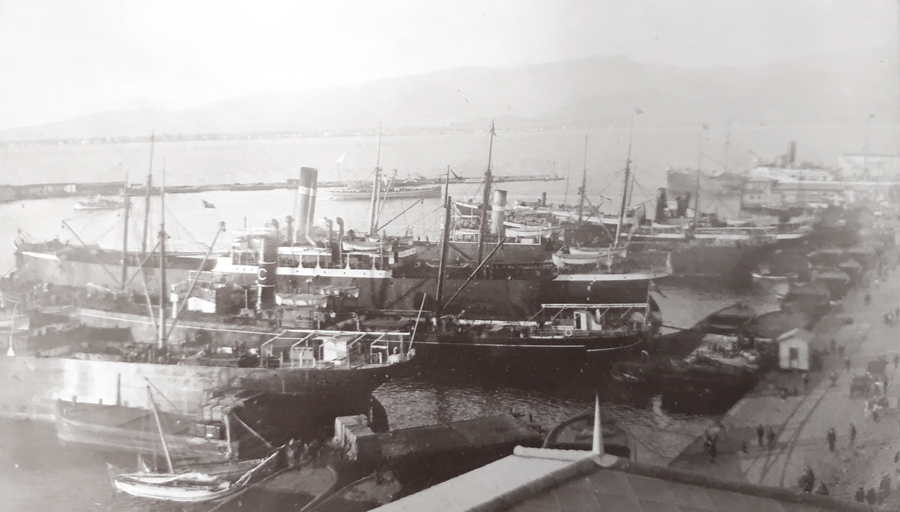
Caption: ‘Smyrne - view of the harbour’.
Caption: ‘Smyrne - view of the port’. The chimney belongs to the Paterson warehouse, former steam mill. The cylindrical building in the middle is the Banque d’Orient. (information courtesy of George Poulimenos)
Caption: ‘Smyrne view towards carapeche’. ‘Carapeche’ is probably referring to the neighbourhood beyond Konak of Karataş. The large building in the center left is the Smyrna Fig Packers warehouse, former seaside railway station of the Aïdin railways. In the foreground is a series of smaller warehouses belonging to the Societe des Quias. One of them housed their offices in the years before 1922. (information courtesy of George Poulimenos)
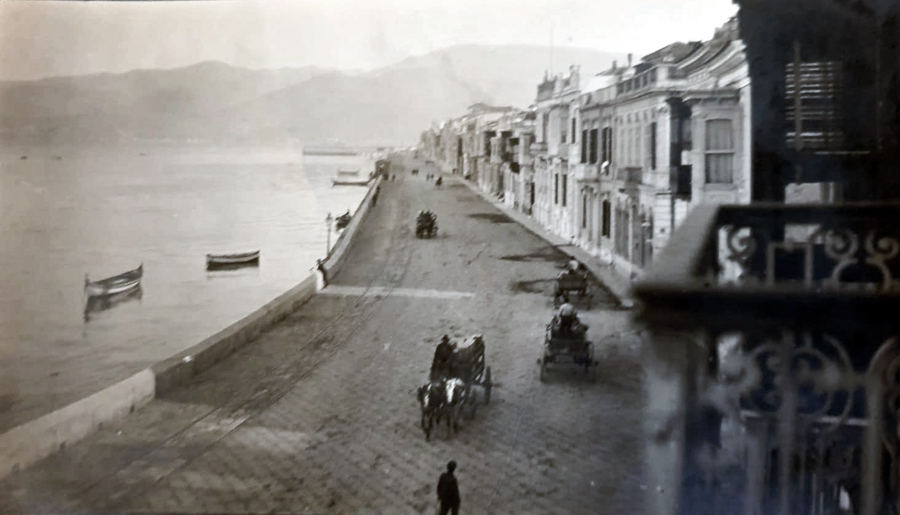
No caption. Punta (Alsancak) section of the Smyrna shorefront.
Constantinople Shorefront
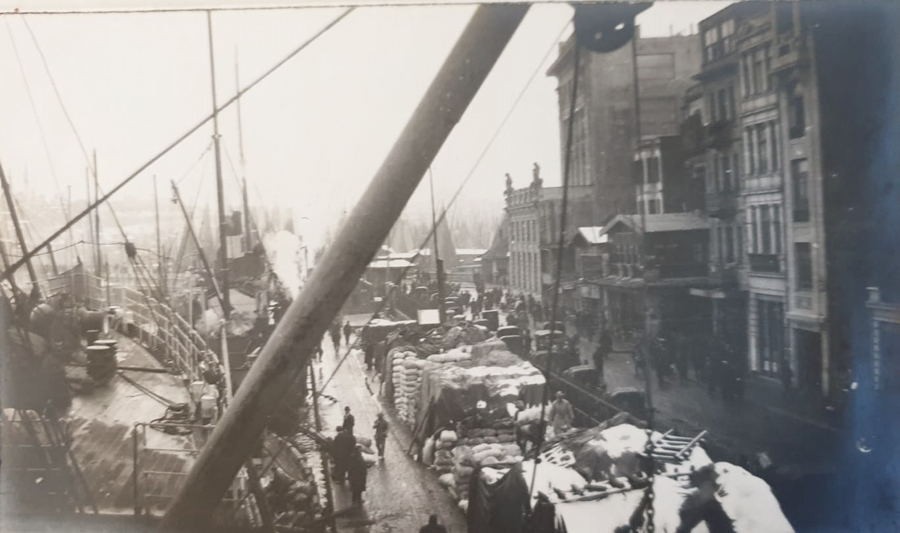
Caption: ‘Constantinople the harbour’. This section of the pier is near the Galata Bridge end as you can see the distinctive corner statues decorating the former Wiener Bankverein [Vienese banking trust] branch in Constantinople - a period image of the area:
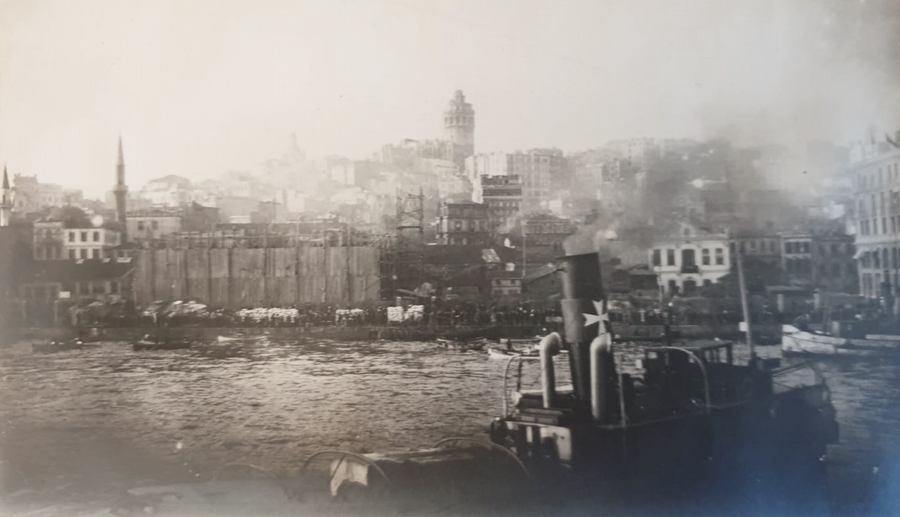
Caption: ‘Constantinople Galata tower’. There seems to be a major construction activity going on by the water-front and this could be the still standing Çinili Han? The imposing building was erected by the French owned Dersaadet Rıhtım Dok ve Antrepo Şirket-i Osmaniyesi [Ottoman Pier, Warf and Warehousing Company of Constantinople] in 1910, so if this is the same building the photo was taken a few years before that date.
The tug in the foreground has a definite Maltese Cross on its funnel suggesting a connection to that country. Richard Anthony Grech was a Maltese Levantine in Dardanelles (Çanakkale) / Constantinople in that business around this date, as can be seen by a shipping register of a different tug with a similar funnel emblem seen in one of the thumbnails, so it is highly probable that this tug also belonged to the same company.
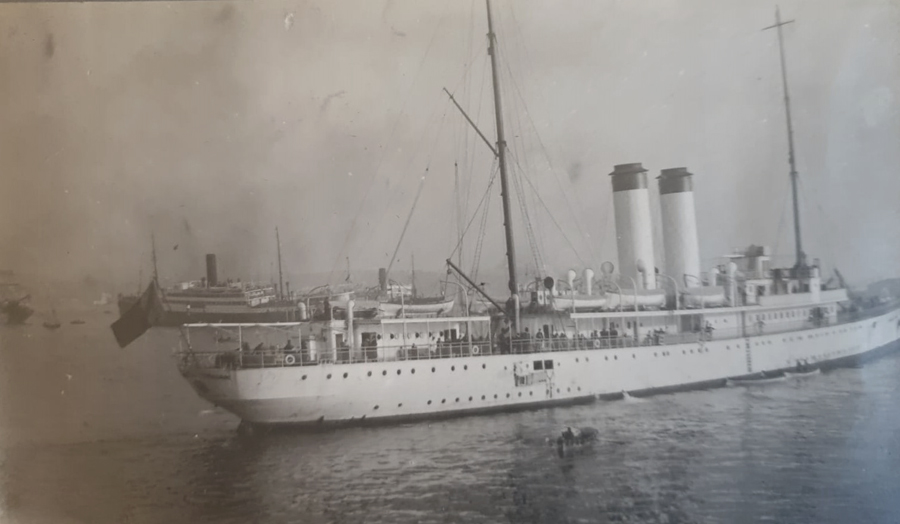
Caption: ‘Imperatul Traian’. This appears to be a Romanian vessel from the name, perhaps in connection with the visit of the Royal Family of that country? Postcard view of this ship.
Oriental Carpet Manufacturers

Caption: ‘OCC - Oriental Carpet Company / Manufacturers’. This factory was probably in the industrial area of Smyrna at Daragac - Mersinli area. OCM was established 1907/8 so this factory must post date it.
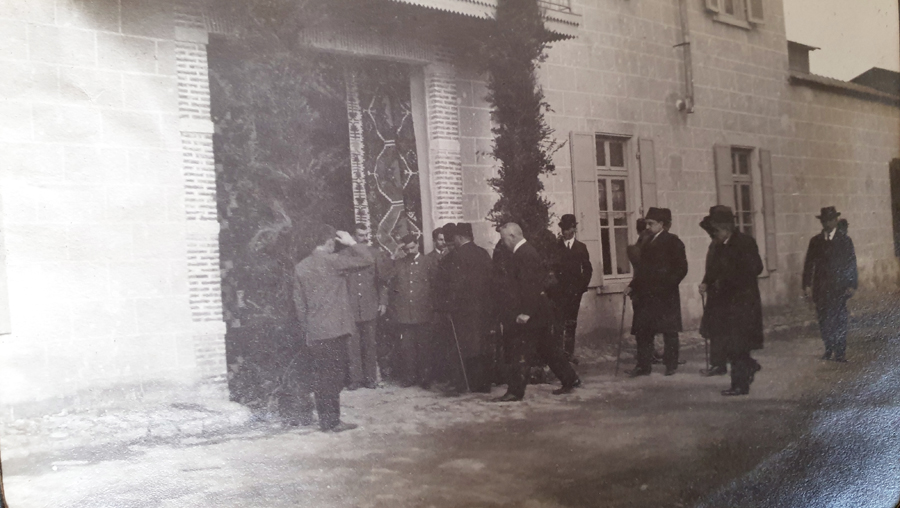
Caption: ‘OCC - inauguration, arrival of the vali’ (district governor).

Caption: ‘OCC - we sacrifice a lamp’. This probably happened during the same day as the visit of the district governor and his entourage who are probably the figures in the background.
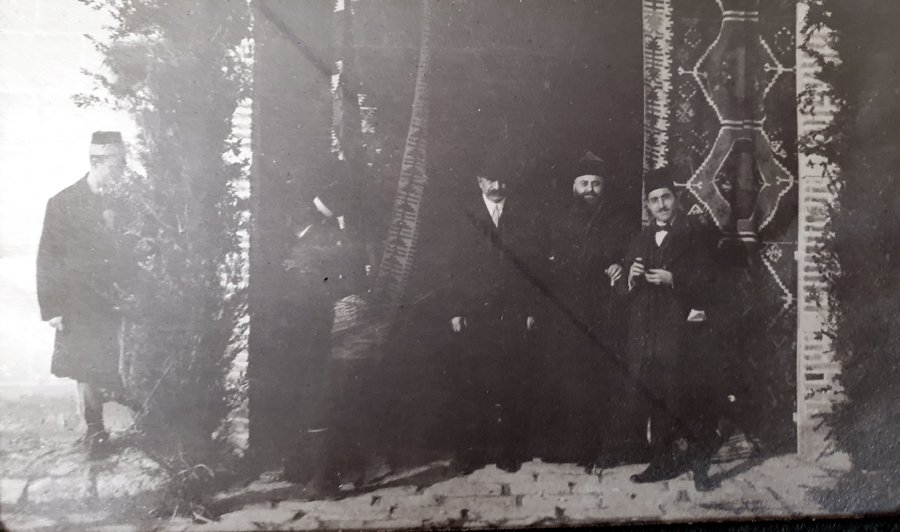
Caption: ‘OCC - the Armenian Archdiocese’. This visit probably happened on a different day from the vali visit as relations were already souring between this community and the government.
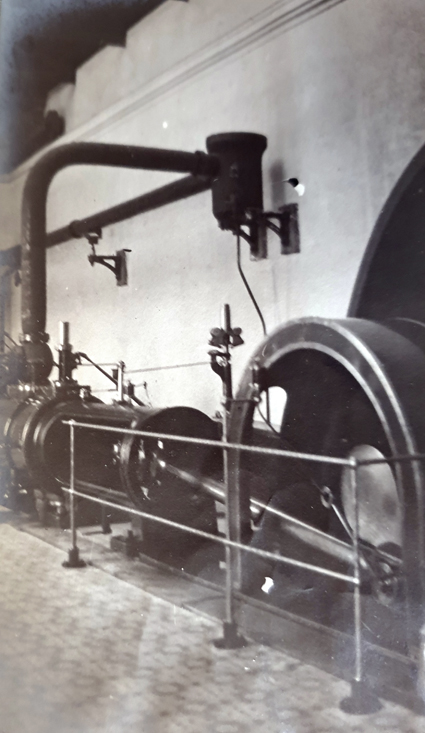
Caption: ‘OCC - engine room’.
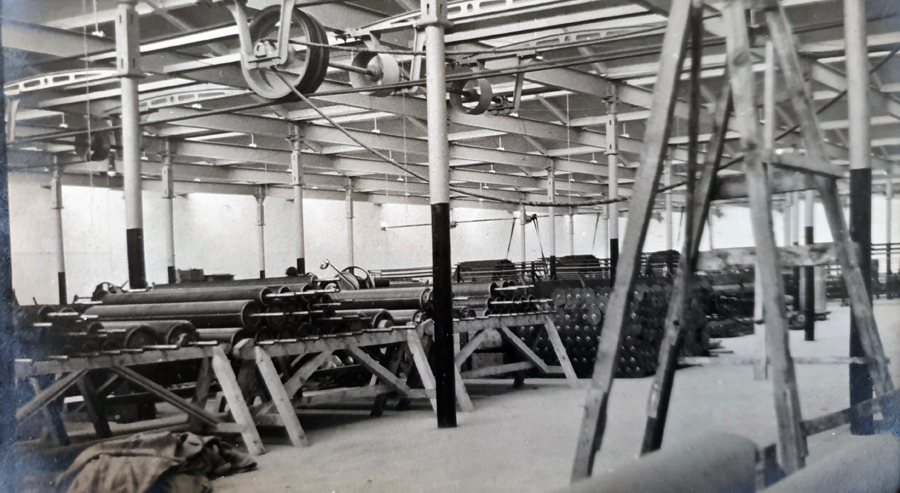
Caption: ‘OCC - spinning room’.

Caption: ‘OCC - spinning room’.
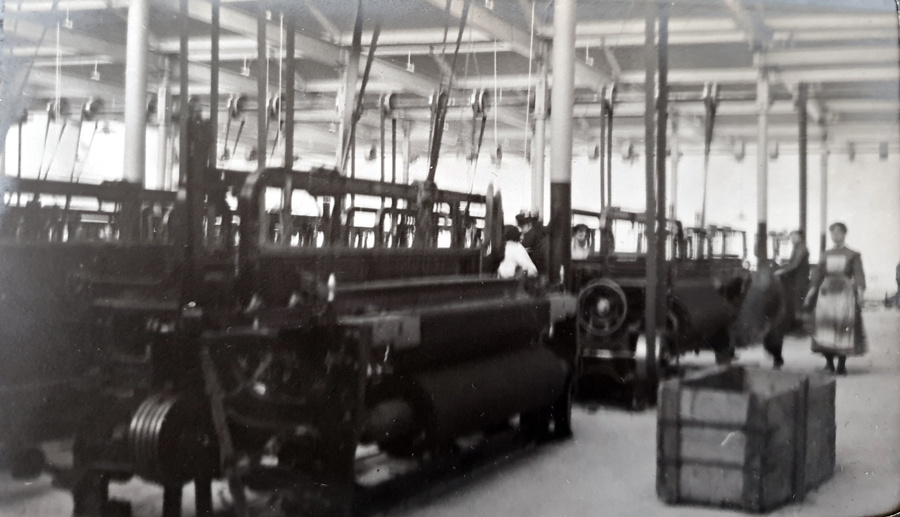
Caption: ‘OCC - weaving room’.
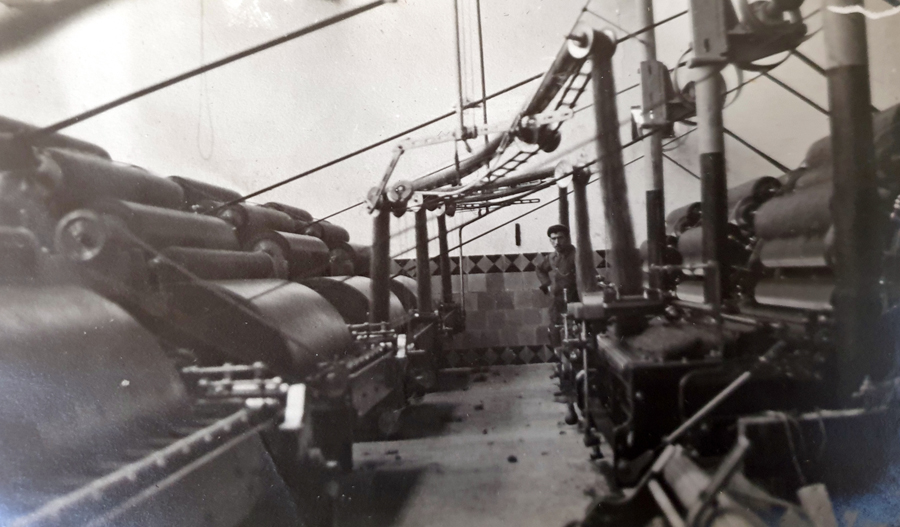
Caption: ‘OCC - wool spinning’.
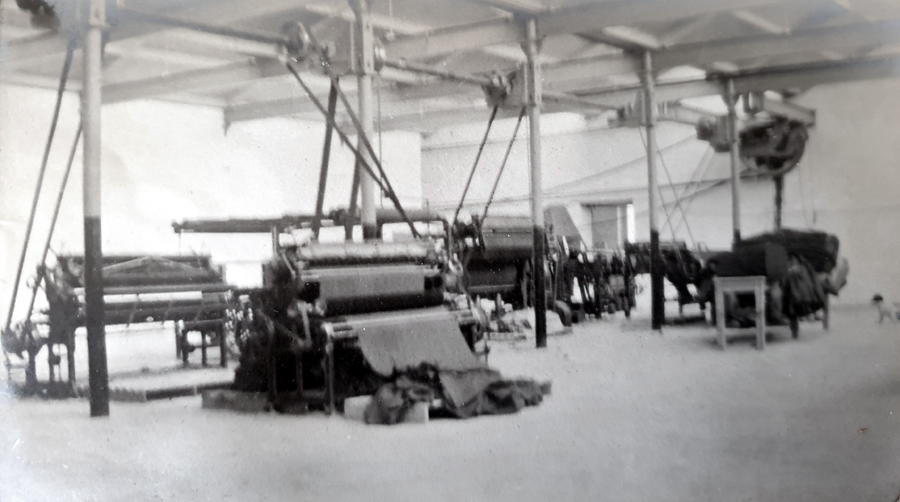
Caption: ‘OCC- ironing room’.
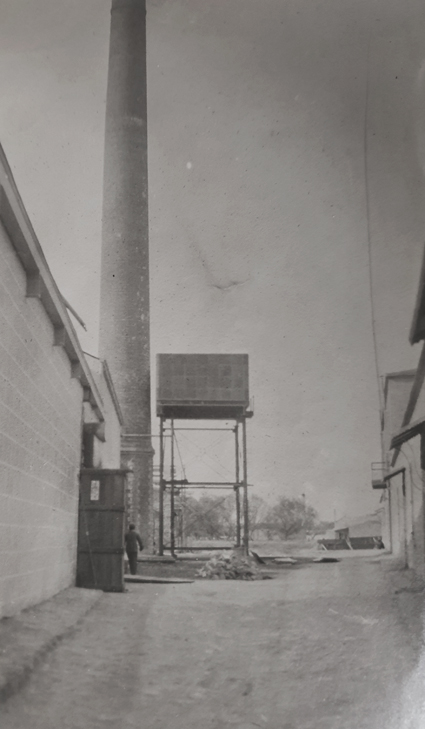
Caption: ‘OCC- water tank’.
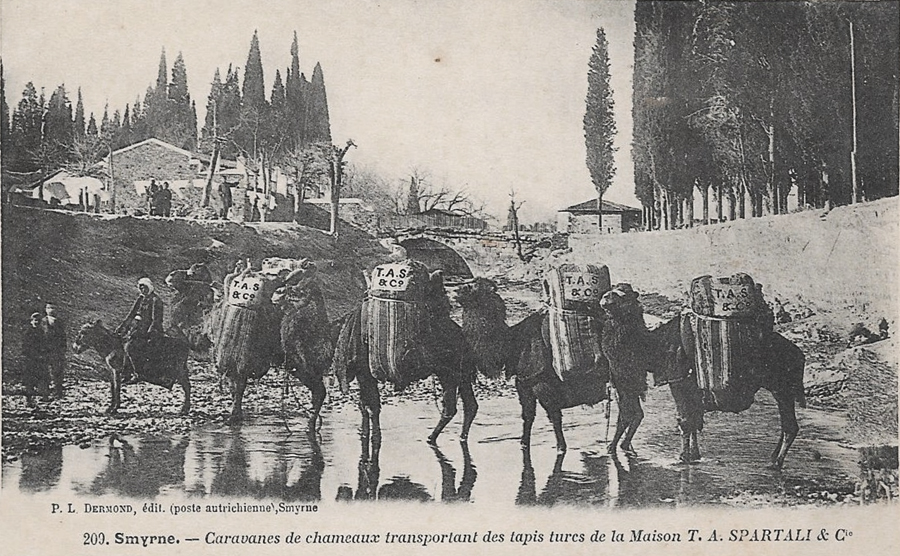
A postcard from the period with branding added for the Spartali company so dating it before 1907/8.
Aliotti estate, Boudja
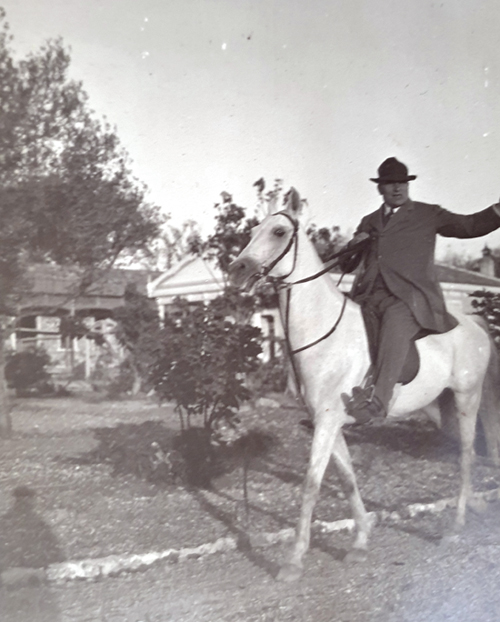
Caption: ‘The farmhouse with Albert Aliotti himself on horseback’. Alberto Maria Antonio born 1866, married in 1910 Béatrice Spartali who was born 1876. Alberto was a merchant and exporter of dried fruit etc. and later the director general of the Oriental Carpet Manufacturers Company. Alberto was the son of Antonio Aliotti (1st Baron Aliotti 1814-1889) & Marie ‘Sophie’ Lochner born 1828. Béatrice was the daughter of Takvor Agop Spartali & Sophie Ekisler. Alberto and Béatrice’s marriage did not survived and they had no issue.
The white building behind the horse is still standing and is mentioned in Feyyaz Erpi’s book as the house of chief servant - below that house today.
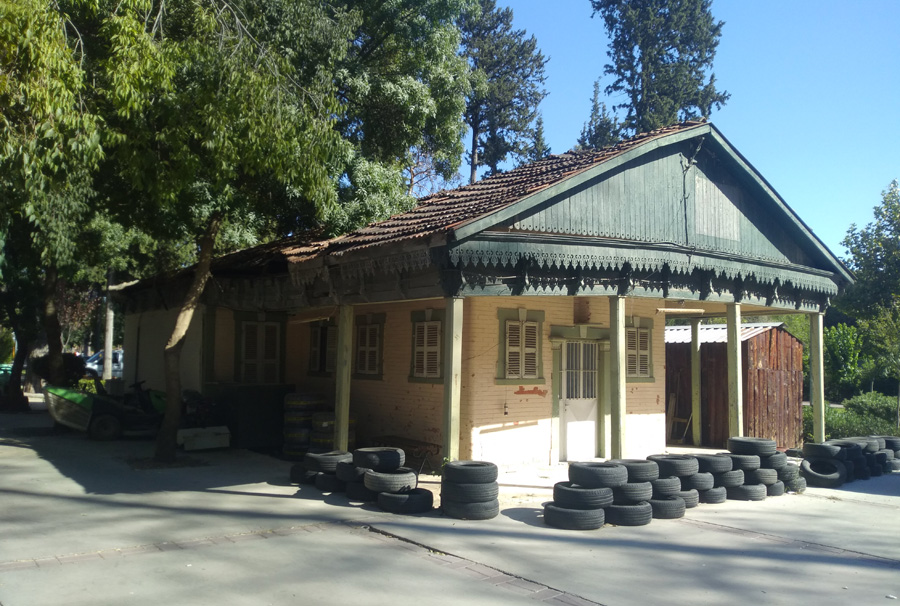

Caption: ‘Farmhouse Albert Aliotti, Boudja - Entrance’. Alternative views of this estate:
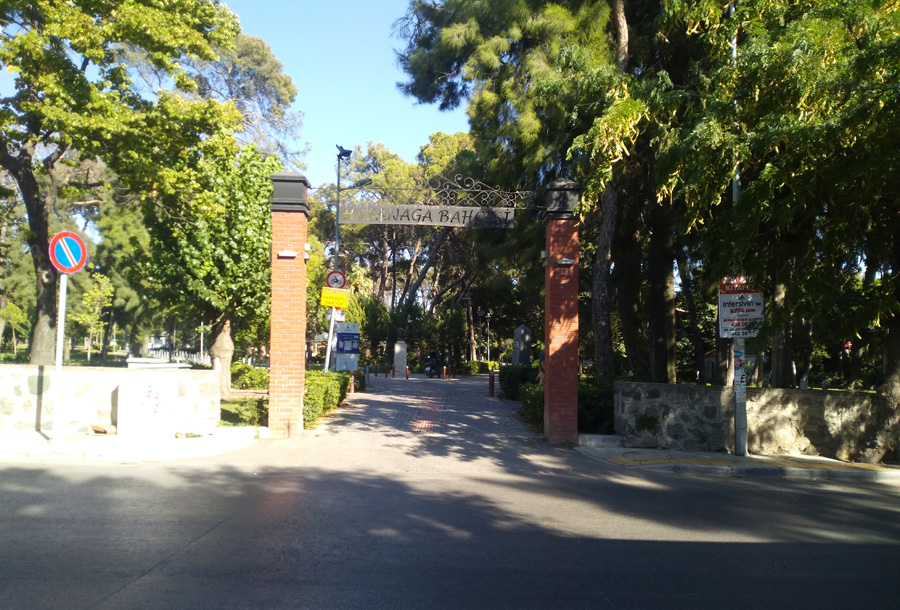
The entrance to the public park seen today in an altered state as the original columns that were still visible in the 1970s photos have gone, replaced by brick.
Caption: ‘Farmhouse Albert Aliotti, Boudja - general view’. The small wooden building within the Aliotti estate may be a folly, partly visible also in one of the 1926 images - below view today.
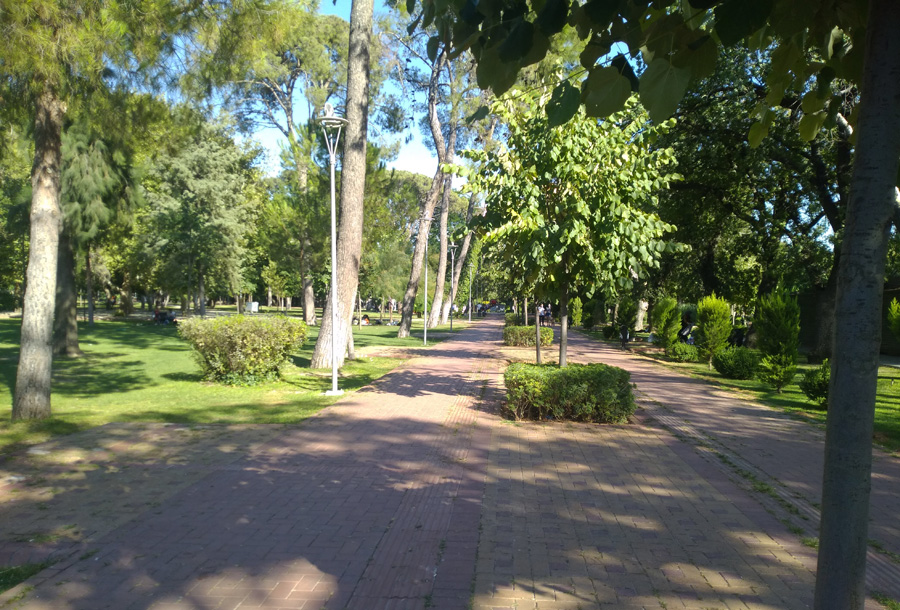
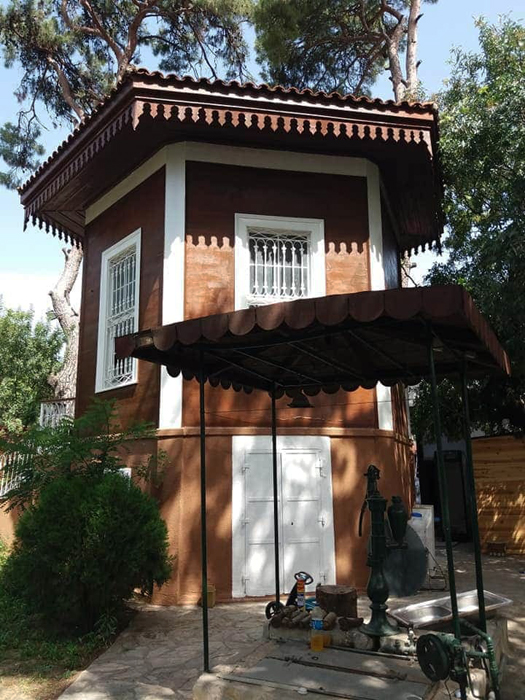
The layout of this building seems very similar to the one in the garden of Barfield/Evliyazade house in Buca, also interpreted as a folly, formerly used by the Levantines / minorities aiding social gatherings.
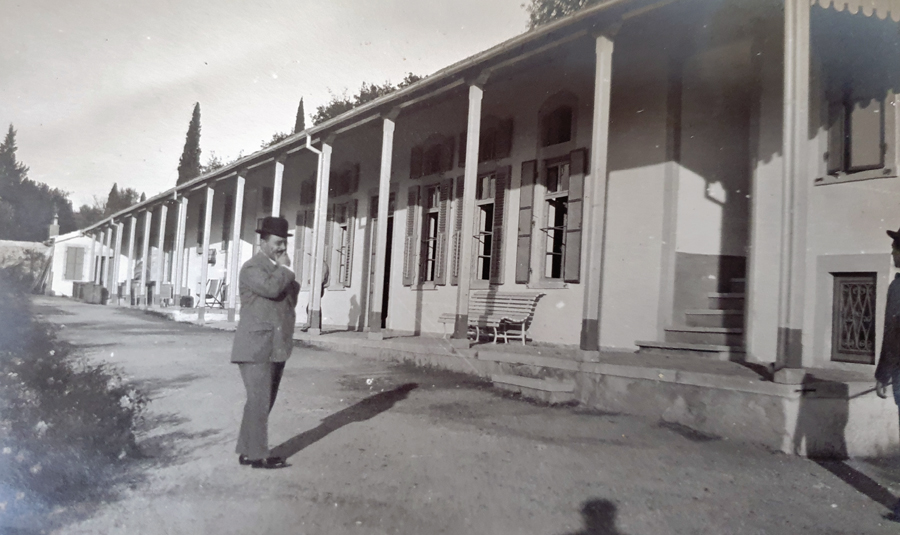
Caption: ‘Farmhouse Aliotti - stables’. Perhaps this row of seemingly repeating units were the servants’ quarters? Nothing remains of these today.

Caption: ‘Mme H. A. Boudja’. Presumably a member of the Aliotti family holding what seems to be a bulky photo camera, and there seems to be a large awning above and perhaps a greenhouse in the background for a possible exotic plant collection?
Information courtesy of Enrico Aliotti Jnr: Mme H.A. could be Adrienne (née de Lochner) wife of Enrico (Henri) Aliotti, my great grandfather, brother of Albert Aliotti.

Caption: ‘A.A. Boudja’. What appears to be a series of large green-houses linked with a passage-way perhaps linked itself to the main house in the Aliotti estate and an awning presumably to provide shade for the more delicate plants. The absence of plants within these green-houses suggests this has all been recently constructed at the time the photo was taken - below what appears to be more established state seen from within the main green-house.

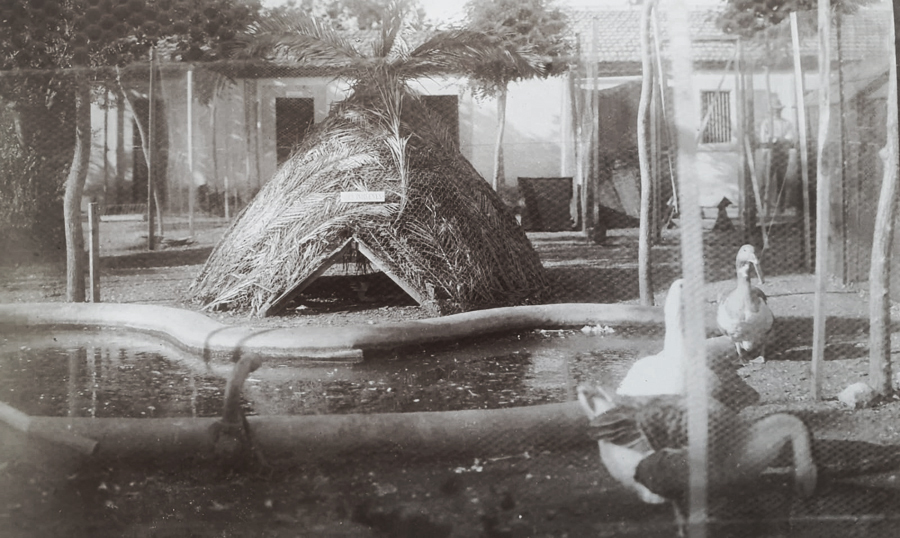
Caption: ‘A.A. Boudja’. What appears to be a water channel and wired enclosures for geese and perhaps other animals. The intricate animal hide with signage in the centre suggests these geese were not farmed but were part of a wider selection of creatures, akin to a mini personal zoo?

An empty cage within Hasanağa garden that housed animals in earlier times and possibly from the original Aliotti estate?
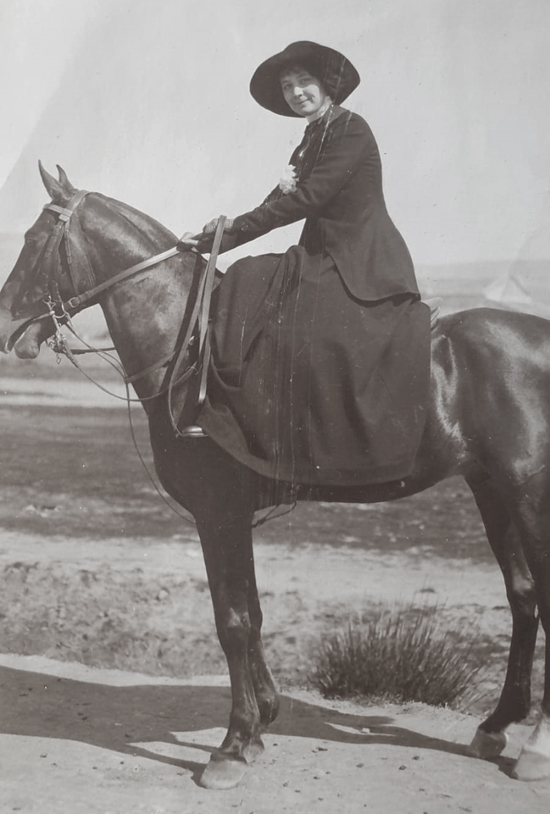
Caption: ‘Christine A.’
Paradiso Races, 1912
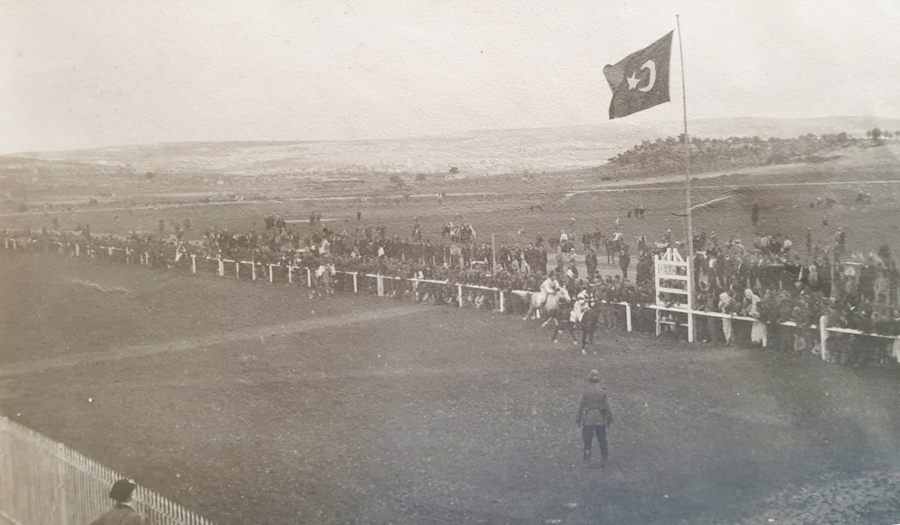
Caption: ‘Concours hippique 1912’ - this caption applies to the entirety of this series only one of which has been annotated on the reverse with names. This appears to show the end of a race with 2 horses close by the finish line with an umpire observing. In the near side of the track we see a European hatted gentleman and the other side of the track what appear to be a local populace with no grandstand from which to observe. It is clear the Levantines paid extra for the privilege and comforts to be on the higher platform (a conventional stand or the ornate stone building nearby) as can be seen in the following photographs - an alternative view of these stands - general article on Paradiso, Alex Balttazzi.
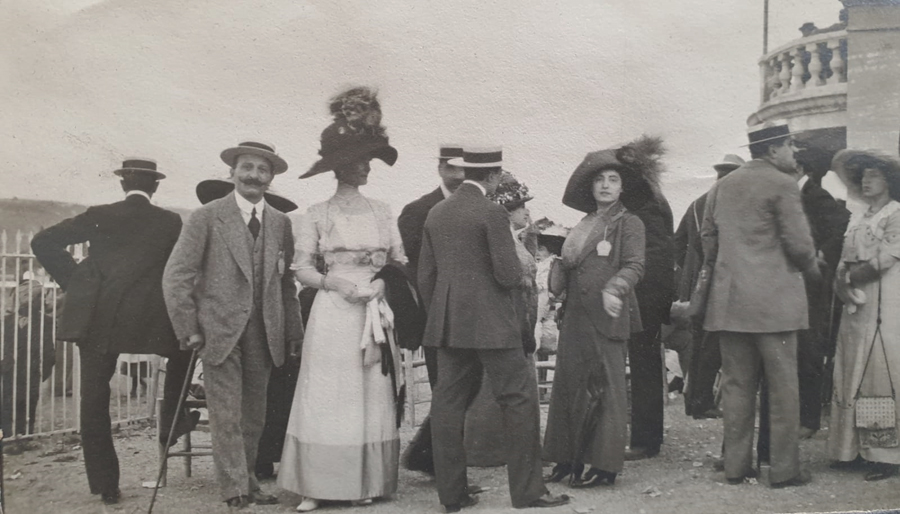
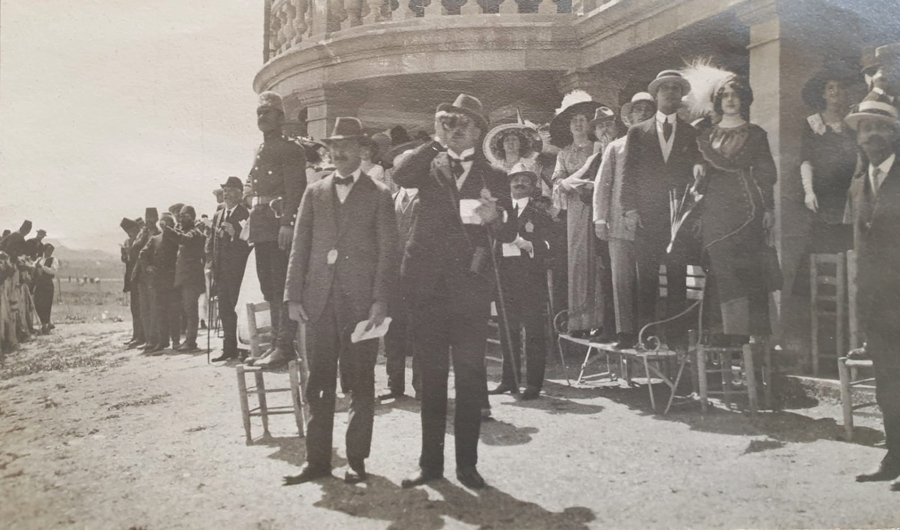
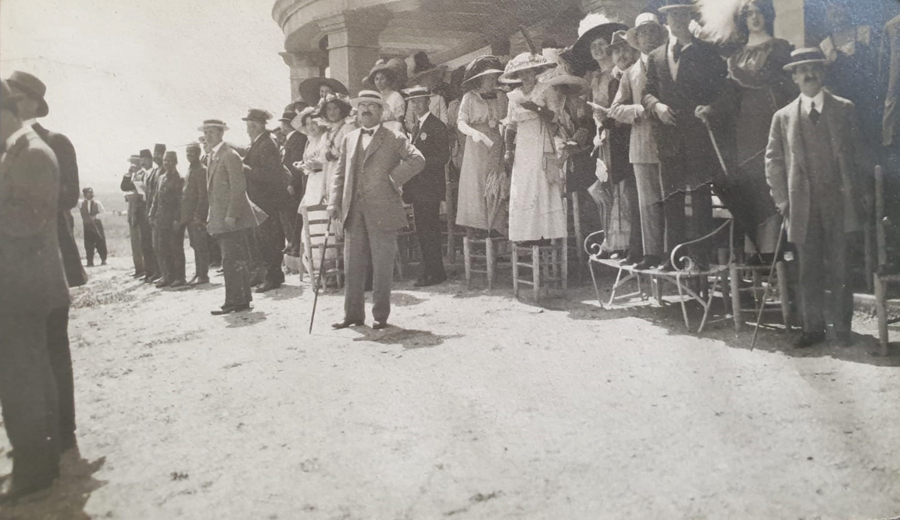
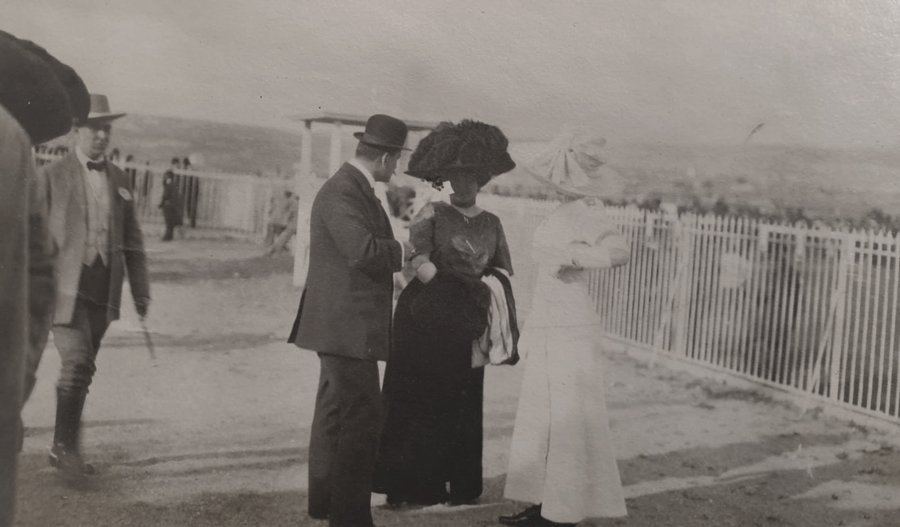
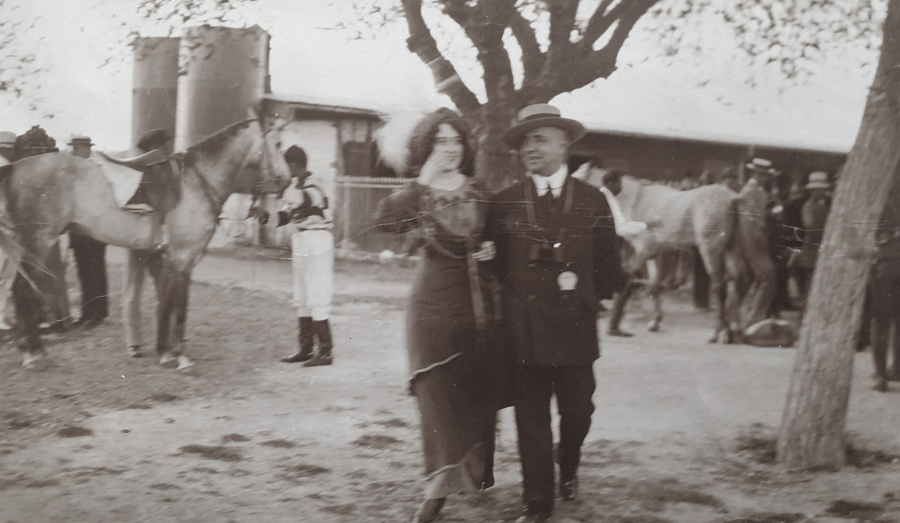
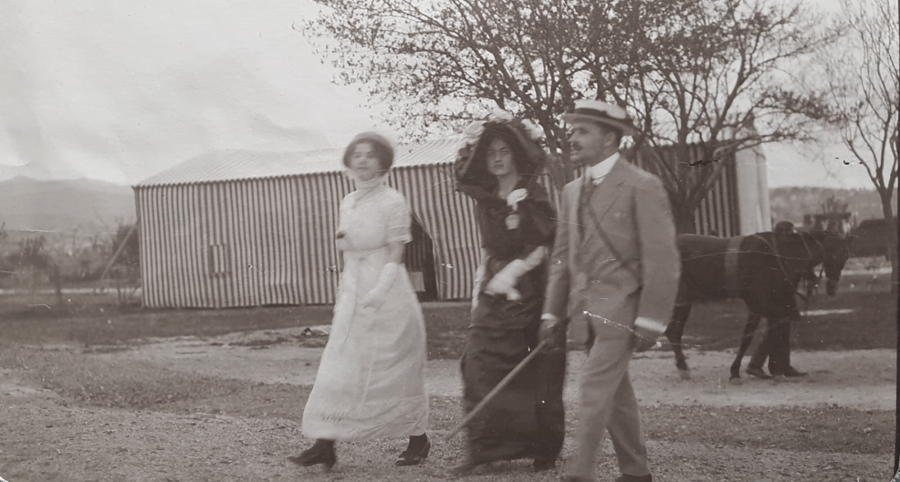
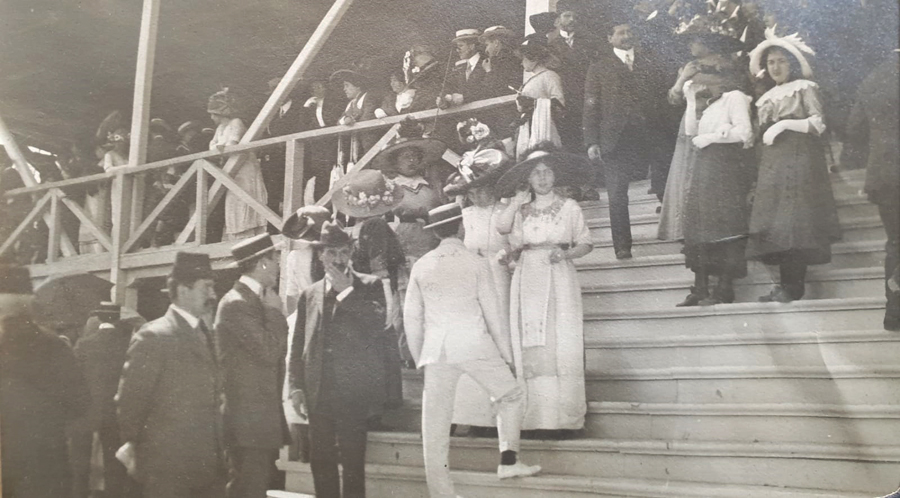
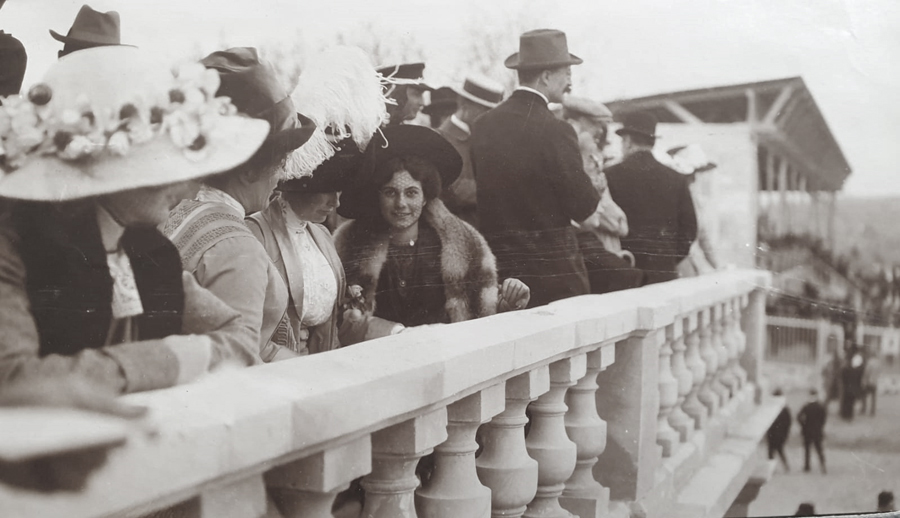
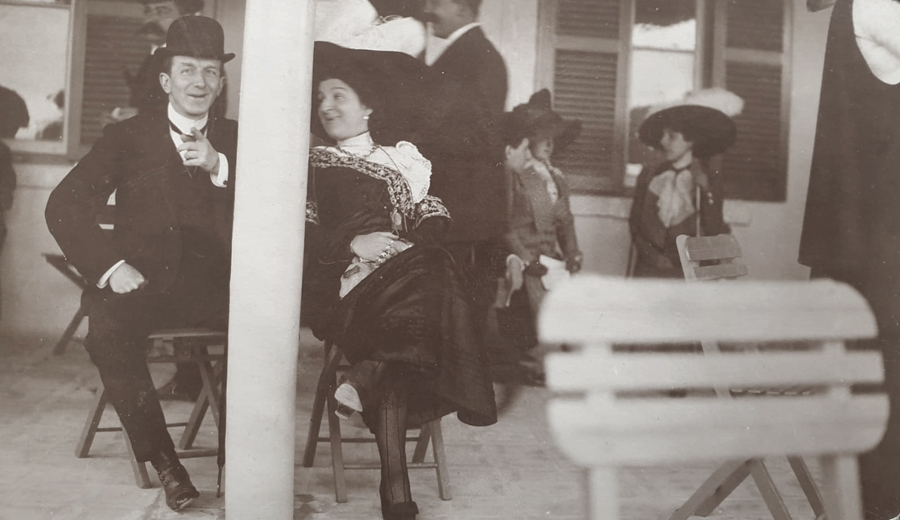
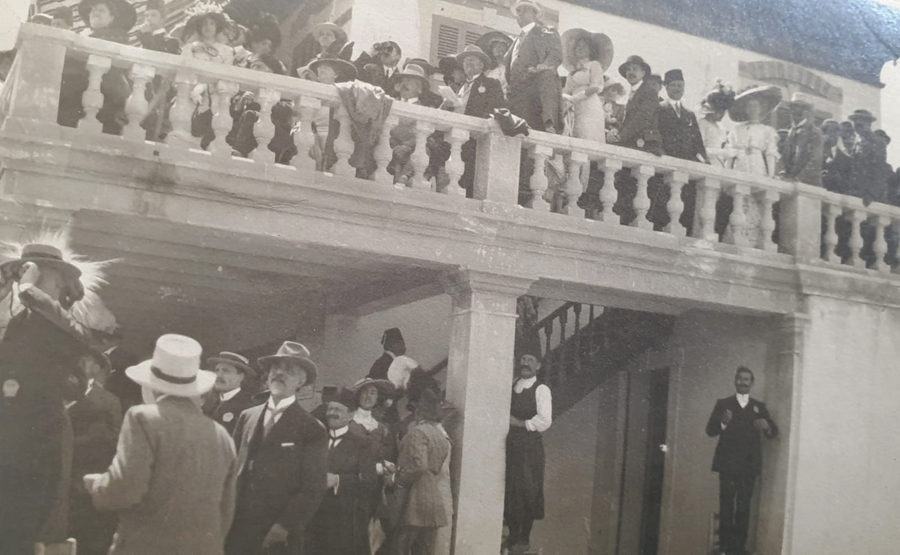
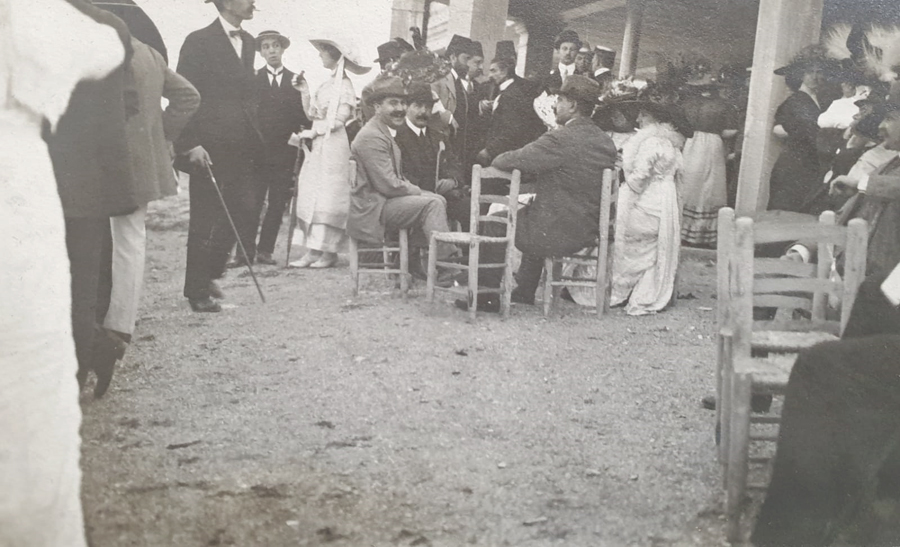
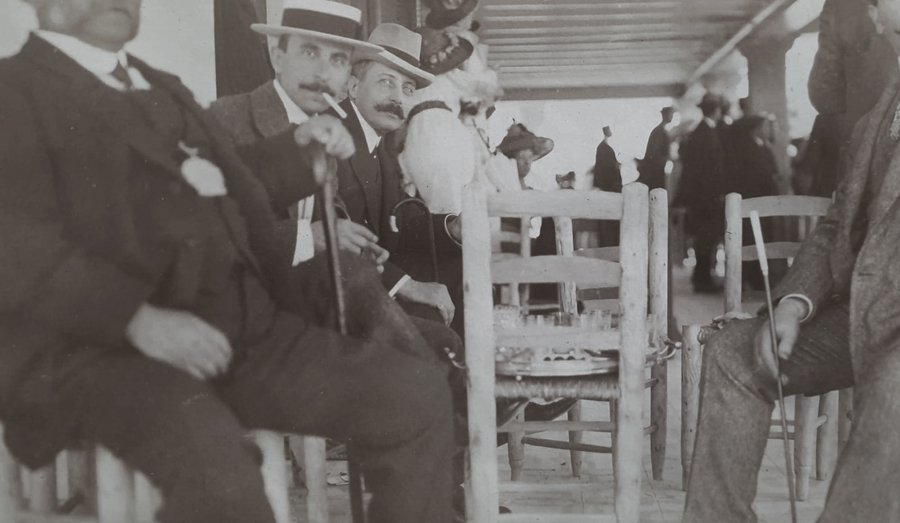
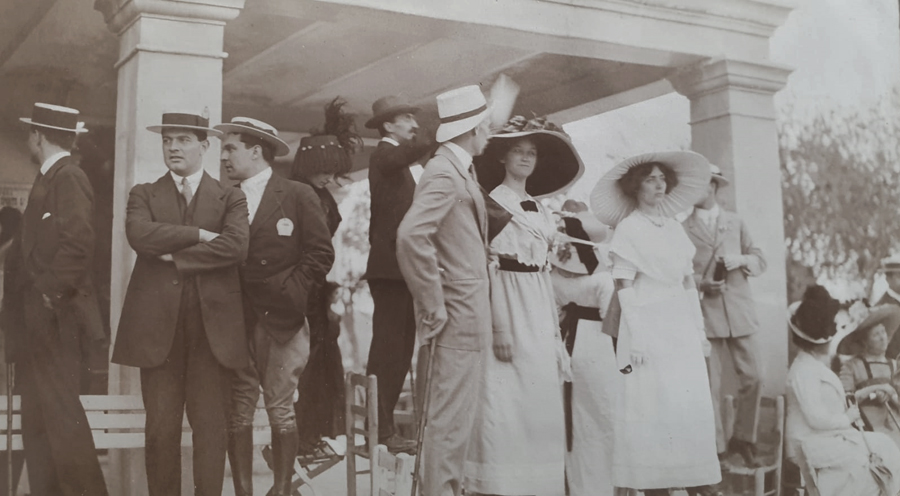
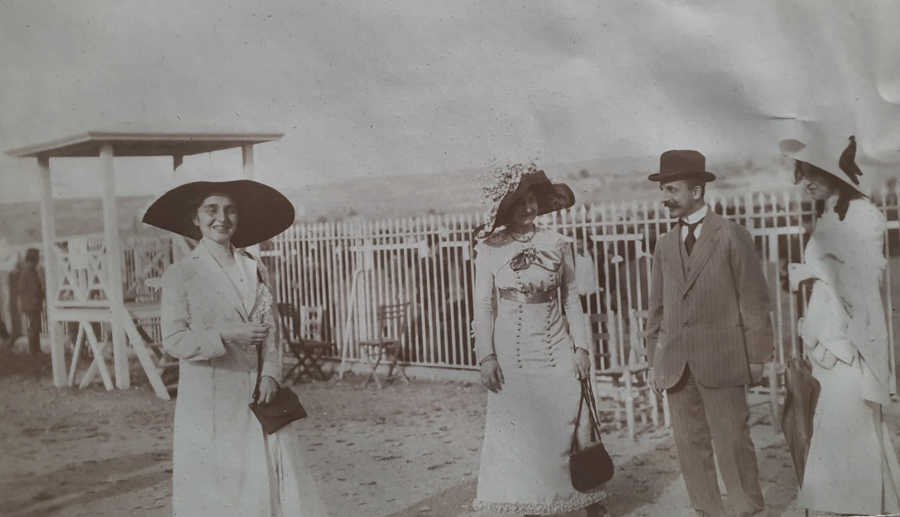
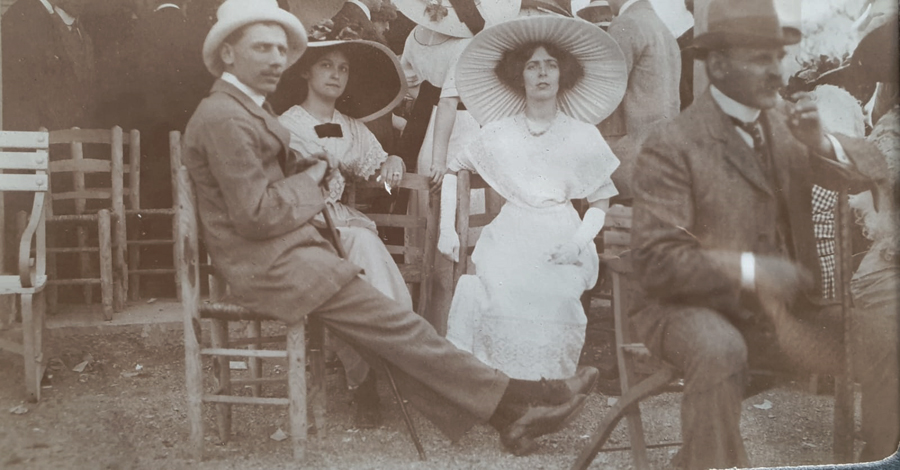
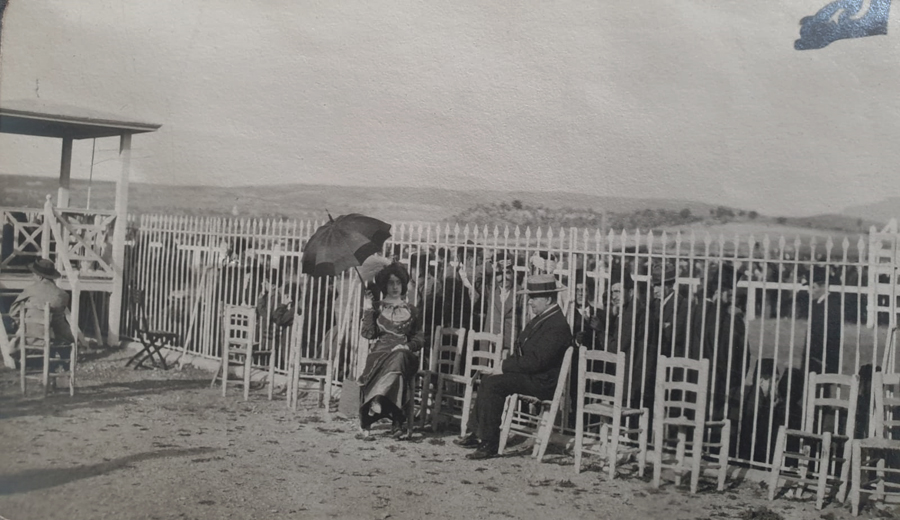
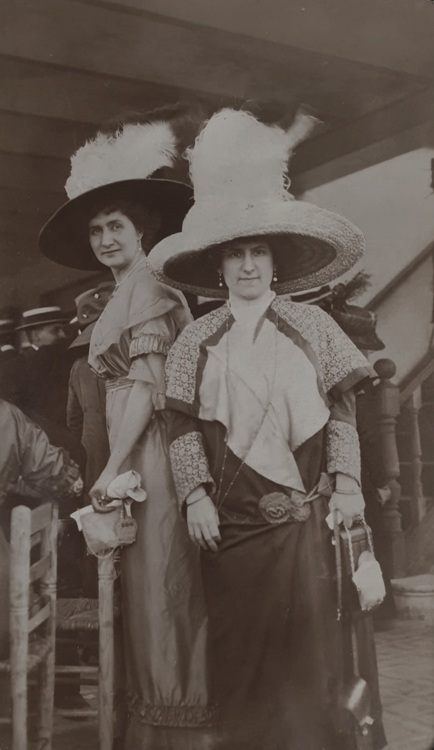
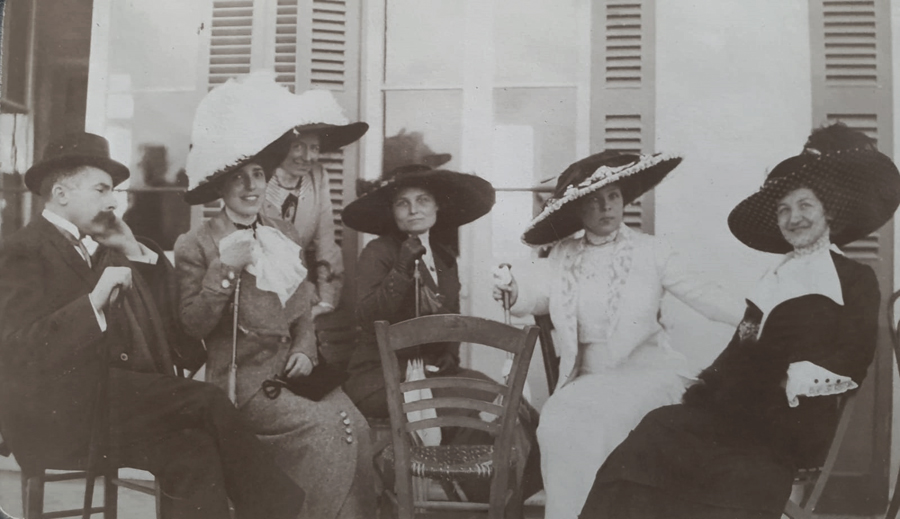
Caption: ‘top left: Jean Raiser, top middle: M. Maracini, bottom right: Evelyne Baladur.’ - annotated at the time by Beatrice Spartali. Alas it is not wholly clear who ‘top left’ & ‘top middle’ refer to. E.B. could be Marie Evelyne Balladur born 1879 Smyrna, daughter of Paul Jacques Balladur and Amélie Browning. M.M. could be Mabel Whittall Marraccini (1886-1984), daughter of Herbert O. Whittall and Louisa nee Maltass, married Ulric Marraccini - info (Jan 1918): and had a daughter Livia Marraccini, who was the second wife of Willem Frank Whittall (1915 - 1989).
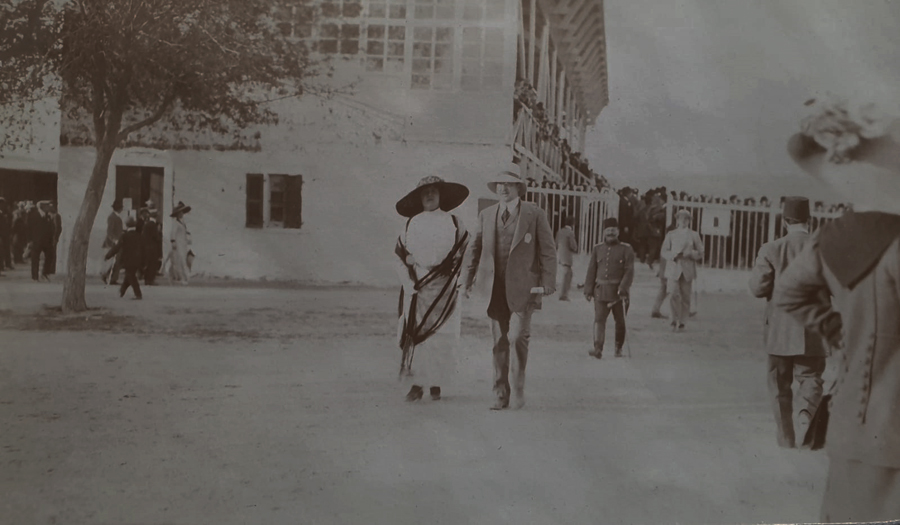
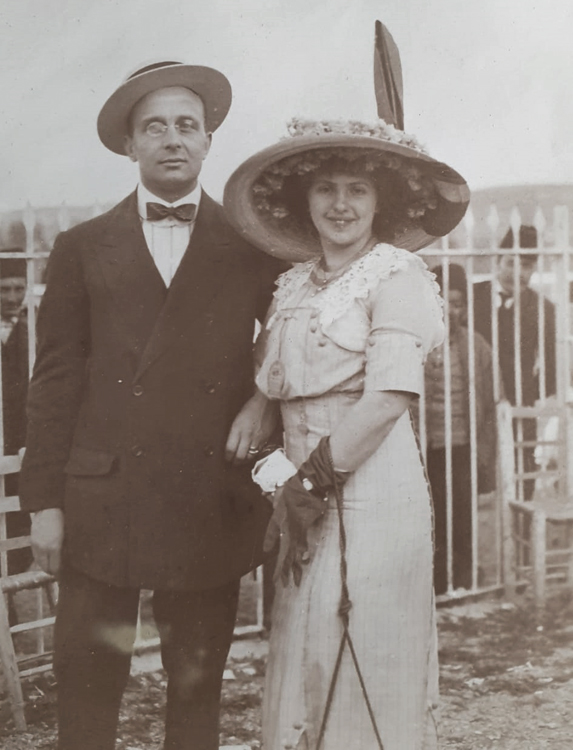
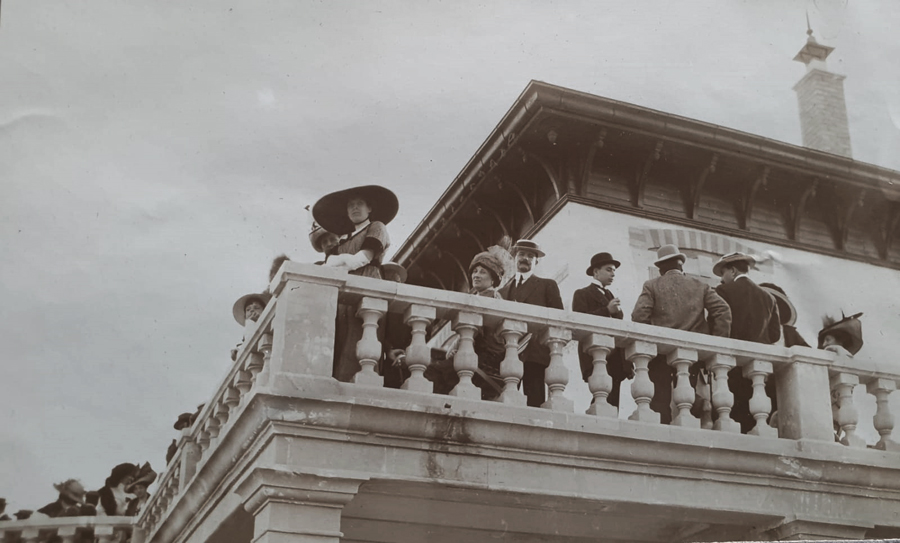
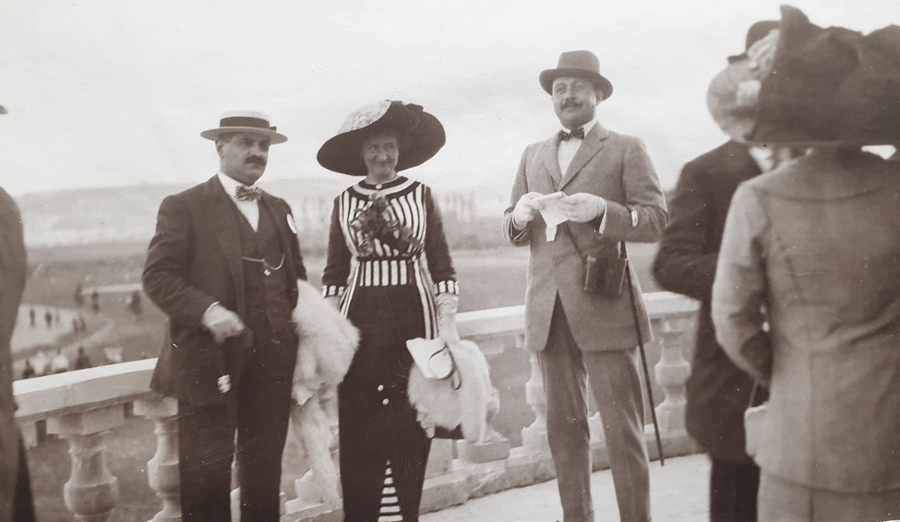


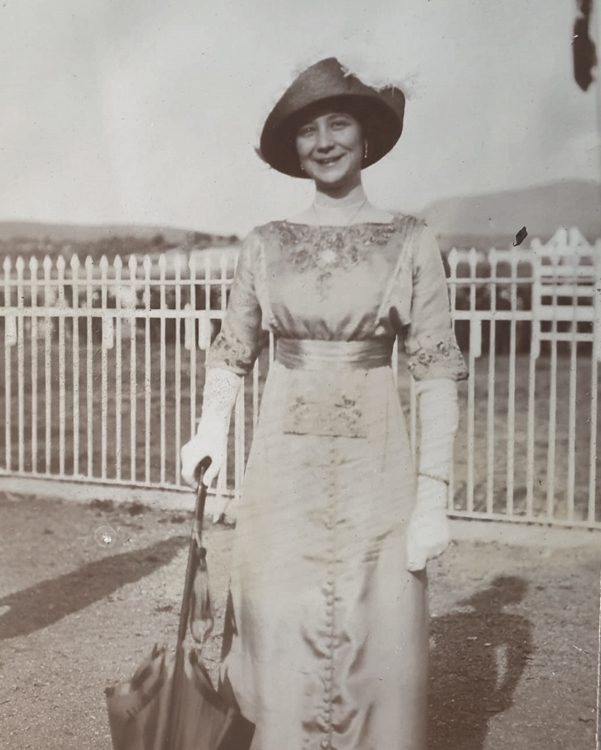
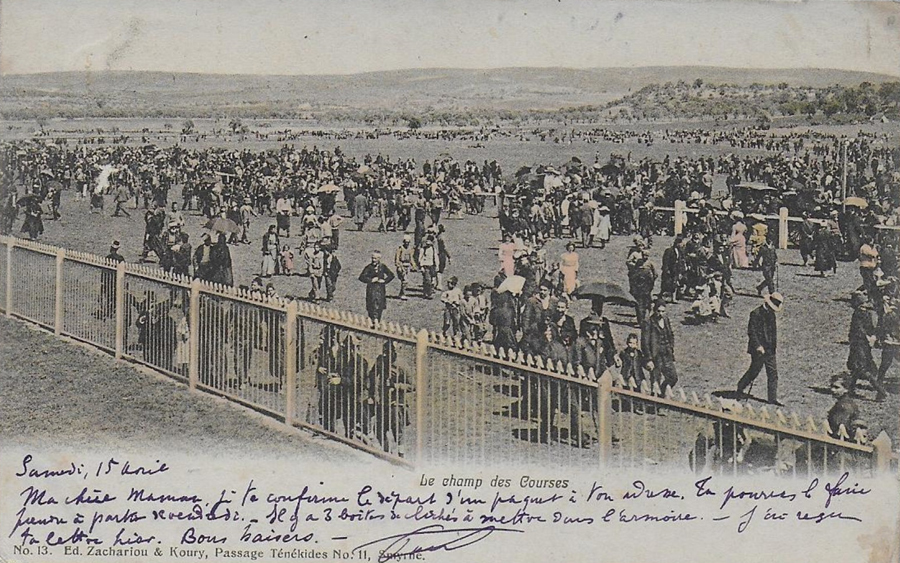
A trio of unconnected postcards showing the same hippodrome from different vantage points.
